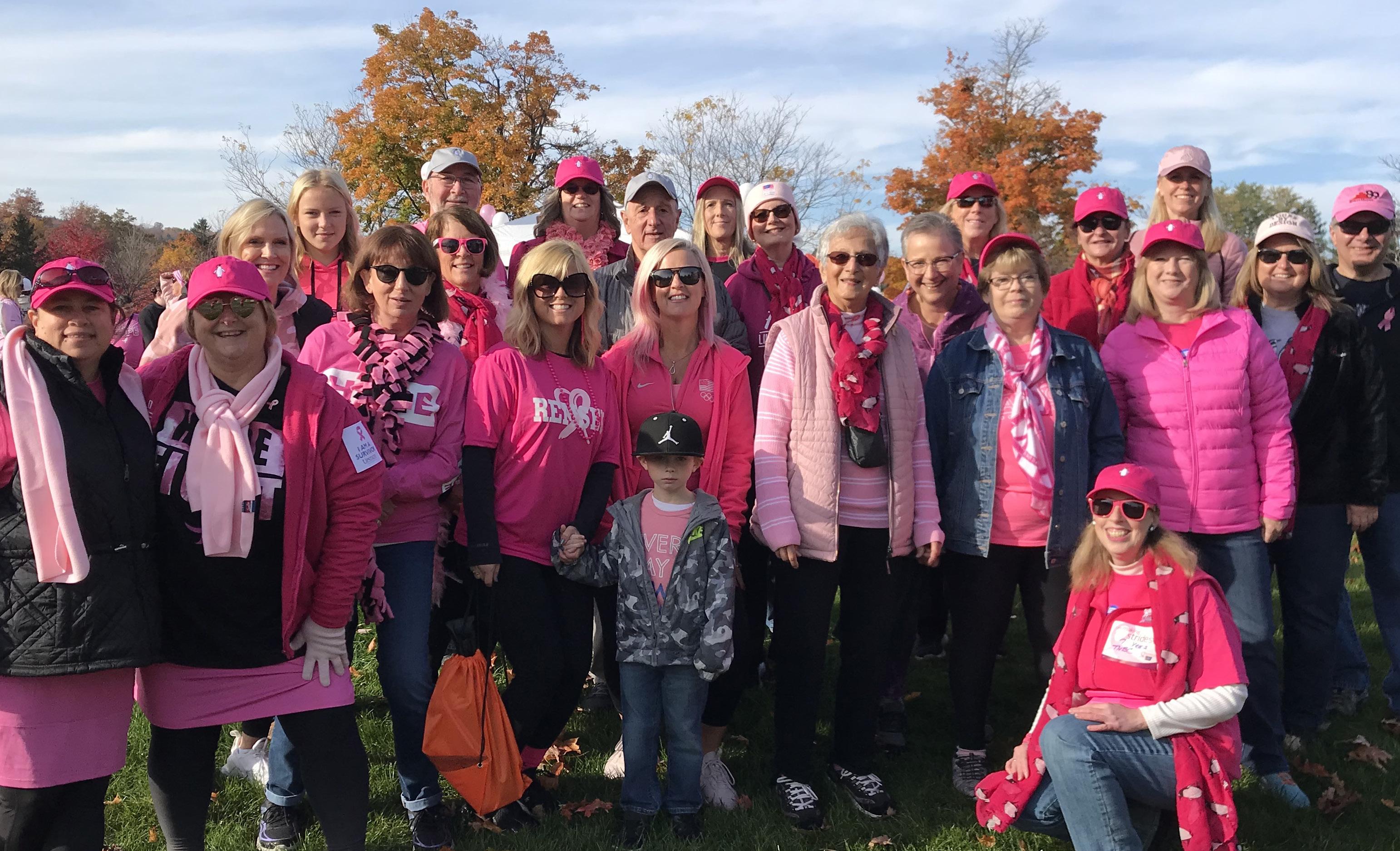








The field of surgery has long been dominated by men, and still is today.
But two new studies show that if patients want safe, effective longterm results, picking a female surgeon might be key.
In one study involving more than 1 million Canadian surgical patients whose outcomes were followed for a year, “those treated by a female surgeon were less likely to experience death, hospital readmission or major medical complication,” wrote a team led by physician Christopher Wallis, of Mount Sinai Hospital in Toronto.

Another study — this time focused on gallstone removal, one of the most commonly performed surgeries — also found female surgeons outperforming males, on average, when it came to outcomes.
Both studies were published online Aug. 30 in JAMA Surgery.
Why the gender gap?
According to physician Martin Almquist, who wrote an accompanying editorial in the journal, it might come down to differences in attitudes toward risk-taking, the surgeon's ability to collaborate with others, and being “patient-centered” when it comes to making decisions around surgery.
In both studies, female surgeons tended to be more methodical and take longer to complete a surgery
compared to their male colleagues, the researchers noted.
“Being accurate and careful most likely beats risk-taking and speed when it comes to consistently achieving good outcomes for the patient,” concluded Almquist, a surgeon at the Skane University Hospital in Lund, Sweden.
Almquist conceded that it’s not yet proven how women outperform men in the OR.
“Perhaps personality traits more common among women contribute to better outcomes?” he said.
Regardless of the reasons, “Surely, the ideal of the surgeon as the [male] ’lonesome cowboy’ belongs to an era long gone," Almquist added.
The surgical profession remains a largely male domain, however.
For example, in the Canadian study — which looked at 25 different types of surgeries conducted between 2007 and 2019 — only about 151,000 of a total of nearly 1.2 million procedures had been conducted by women.
In the study, Wallis and his colleagues tracked 90-day and one-year outcomes for all patients.
Data was first compiled on a “composite outcome” that included deaths, hospital readmissions and/ or complications. According to the study, nearly 14% of patients treated by male surgeons experienced at
least one of these events within 90 days, compared to just 12.5% of people operated on by a woman.
At one year post-surgery, 25% of the patients of male surgeons had experienced such an event, compared to just under 21% of those treated by women. When it came to deaths, 2.4% of patients who’d been operated on by a man were deceased by one year post-surgery, compared to 1.6% of those who'd had a female surgeon.
The second study, focused on gallbladder operations, was led by physician My Blohm, a surgeon at Mora Hospital in Sweden.
It focused on more than 150,500 patients who underwent elective or emergency gallbladder surgeries between 2006 and 2019. Patient outcomes were tracked for 30 days after their procedures.
Again, the team found that female surgeons tended to spend more
time on a surgery — an average 100 minutes for an elective procedure versus an average of 89 minutes for men.
Maybe that extra time and attention paid off for patients: For elective procedures, patients operated on by male surgeons had 28% longer hospital stays and a 66% higher odds for bleeding complications, compared to patients operated on by a female surgeon, Blohm’s team reported.
So why would a surgeon’s gender matter?
“Personal characteristics and attitudes are difficult to study, but probably affect outcomes,” the Swedish group wrote.
“This study’s important finding that female surgeons may perform safer operations and operate more slowly indicates that caution might be a favorable quality," they added.

November is Lung Cancer Awareness month. As a service to our community, Hematology-Oncology Associates of CNY and CRA Medical Imaging are offering a free lung cancer screening to qualified participants.

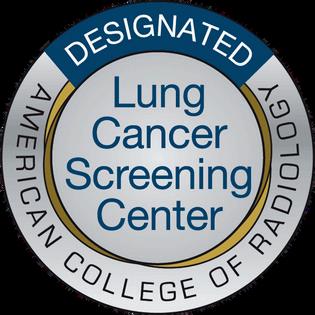
Who: Free screenings are available for individuals ages 50-80 who:
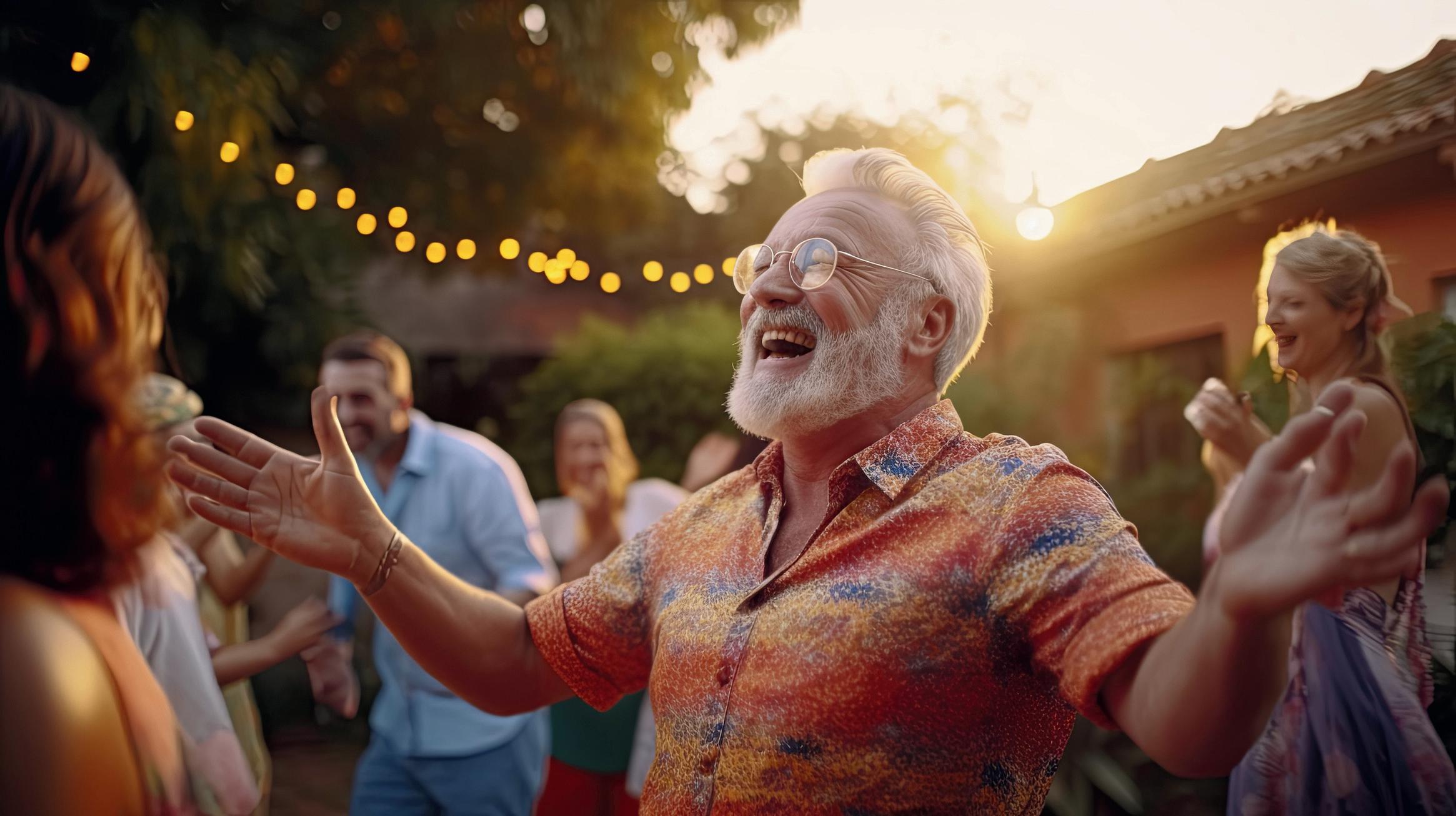
- are heavy smokers (e.g., 1 pack a day for 20 years or 2 packs a day for 10 years)
- OR are former heavy-smokers who quit in the last 15 years
- AND have not previously received a free lung cancer screening from us. Note: Anyone with insurance can contact our office to discuss getting a lung cancer screening at your convenience.
When: Saturday, November 4, 8:00 a.m. to 2:00 p.m.
Where: HOA’s Onondaga Hill, East Syracuse and Auburn offices
To learn more, call 315-472-7504 extension 1301 or visit hoacny.com
This free screening event is co-sponsored by:
Beginning Sept.1, New York state’s cigarette tax will be the highest in the nation. The $1 hike is the first cigarette tax increase since 2010 and changes the tax from $4.35 to $5.35 per pack of 20 cigarettes.
A pack of Marlboro in Upstate New York costs an average $14.50. The cost varies from region to region. Research shows a 10% increase in tobacco prices would be expected to decrease tobacco consumption by 4% in high-income countries.
Increasing the cost of cigarettes is one of the most effective ways to pro-
mote smoking cessation and prevent youth initiation.
The American Cancer Society Cancer Action Network projects the impact of the higher tax will save 15,300 New Yorkers’ lives and prevent 14,400 youth under age 18 from becoming adults who smoke.
The latest data from the NYS Department of Health show that one in five high school-age youth uses tobacco products. New York state spends approximately $9.7 billion annually on preventable smoking-related health care costs.
Emergency room visits for injuries related to driving under the influence of cannabis skyrocketed in Canada after the drug was legalized, a new study reports.
In October 2018, Canada became the second country to nationally legalize recreational or nonmedical cannabis for adult use.
While known cannabis-involved emergency department (ED) visits for traffic injuries were still rare, they grew by 475% over 13 years, with a sharper rise in accidents after legalization, the researchers found.
“Our findings highlight a concerning increase in cannabis-involvement in traffic-injury emergency visits over time, with even sharper spikes following the phases of legalization and commercialization,” said lead author Daniel Myran, a post-doctoral trainee at the Institute for Clinical Evaluative Sciences (ICES), and a family physician at the Ottawa Hospital.
“Conversely, alcohol-involvement in traffic injury ED visits did not increase over the study period, which suggests that legalization of cannabis has played an important role in rising rates," Myran said in an ICES news release.
For the study, the researchers
looked at cannabis-involved ED visits for traffic injuries between 2010 and 2021, looking for changes after the October 2018 commercialization of the legal cannabis market, which expanded products and retail stores.
The investigators reviewed data from more than 947,000 ED visits for traffic injuries in the province of Ontario. Annual rates of cannabis-involved visits surged from 0.18 visits per 1,000 total collisions in 2010 to 1.01 in 2021.
Legalizing non-medical cannabis with restrictions was associated with a 94% increase in the rate of cannabis-involved traffic injury ED visits compared to the pre-legalization period.

Later, after commercialization, which overlapped with the COVID-19 pandemic, researchers saw an even greater increase of 223% in rates compared to the pre-legalization period.
Higher rates of ED visits were seen in men, those who lived in lower-income neighborhoods and those aged 19 to 21, as well as for those who had a prior cannabis-related ED visit.
The study findings were published online Sept. 6 in JAMA Network Open.

call 315-749-7070.
IGHmohawkvalley@gmail.com
Editor & Publisher: Wagner Dotto • Associate Editor: Stefan Yablonski
Contributing Writers: Barbara Pierce, Deb Dittner, Gwenn Voelckers, David Podos, Deborah Jeanne Sergeant, Anne Palumbo, Daniel Baldwin
Advertising: Amy Gagliano: 315-402-3370 • Email: amyIGHmv@gmail.com
Layout & Design: Angel Campos-Toro • Office Manager: Allison Lockwood
Q: So it’s more of a sports medicine intervention?
A: Yes, correct.
Q: How are outcomes so far?
A: It’s generally a very good outcome. In my experience, so long as the patients are selected appropriately and they follow up, I’ve seen very good outcomes. It also depends on other factors going on in the knee. The idea is for patients to be able to get to the level of activity that they want to do, whether that’s running or exercise or even just walking and hiking.
Q: I take it these are fairly common sports injuries?
Q: I understand you’re doing a new kind of surgery on knee cartilage?
A: Yeah, it’s called the MACI (matrix-induced autologous chondrocyte implantation). Basically what it is, it’s a way to culture cartilage from someone’s knee. Essentially what happens is that culture is grown into new cartilage cells in a lab and then we come back later and implant those cells into the knee, wherever the cartilage is damaged. So it’s used to treat cartilage defects in active patients. It’s a newer type of procedure. We’re regrowing the patient’s own cartilage cells to repair a cartilage defect that’s causing knee pain in the patient.
oretical risk with MACI.
Q: Is the cartilage healthier when you grow it this way?
A: The studies show that it fills in defects pretty well, but it’s still being studied.
Q: Have you found it easier to work with?
A: I think compared to previous generations of this type of procedure, it’s much easier. The surgeries are generally shorter, which means less blood loss, less anesthesia time. I think the technology, at least with this procedure, have taken a jump.
Q: Does it reduce the likelihood
A: Yes, cartilage defects can happen on their own. They can be the result of ligament tears, ACL tears, meniscus tears. It’s becoming more and more common as our imaging gets better and better. We start to recognize this more. I’d say we find cartilage damage in around 60% of the patients who undergo knee scopes. So it’s pretty prevalent.
Q: At what point do you consider replacements compared to more conservative treatments?
A: Generally for most patients we try conservative treatments like therapy, activity modifications, bracing, medications, even injections sometimes. Usually when those fail and we’re pretty confident that the source of the pain is the cartilage damage, that’s when we’ll start to take this step.
Q: What put MACI on your radar? Is it common for smaller hospitals like Oneida Health to do procedures like
A: It can be. For me, during my sports medicine training, I trained with one of the pioneers of the MACI procedure, so it was part of my training, so I got extensive experience with that in my sports medicine fellowship. It’s usually performed at bigger academic centers just because of the resources and patient base. This is the first time it’s been done at
Q: Do you specialize in knees?
A: I’d say knees and shoulders are what I treat most commonly, but I also treat hips, ankles, hands, wrist, elbows. But it’s mostly knees and
Q: Do you see a similar use for this
A: Yes. In fact, it’s been done, it’s just not well-studied. It’s not completely approved for shoulder use yet. It was designed for knees, so other joints are pending data for
Q: What got you interested in
A: My father was a team physician and I was an athlete growing up. I played a lot of basketball. I played a lot in college too. For me, this was a way to stay involved in sports, which was my passion while going down the medicine route. I treat athletes of all ages, from
youth to recreational weekend warriors. I treat all levels of athletes. So it’s a way to stay involved in athletics.
Q: Having been an athlete and having played basketball in particular with all the pressure cutting puts on your knees, have you found that your medical education changes how you approach the game, assuming you still play?
A: I do and it does. I completely changed the way I play. Being a taller guy, I was usually in the post. Sometime in residency, I hurt my back doing that and ended up getting back surgery. After that, I changed the way I play. I don’t really play the post much anymore.
Q: With that in mind, what advice would you give a younger basketball player?
A: Keeping up with your strength and cardio makes a big difference. Stretching after a game to stay flexible. And then also knowing your limitations. You may not want to be dunking at 40 or 50.
Name: M. Asad Khalid, M.D.
Position: Director of orthopedic and sports medicine at Oneida Health
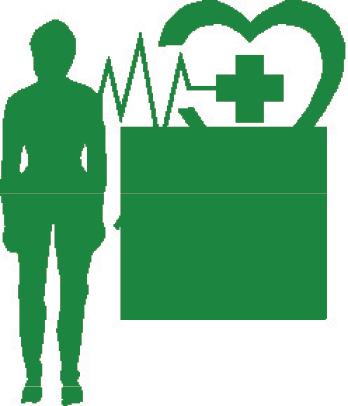
Focus: Sports medicine and general orthopedic surgeon. Specializes in treating injuries of the knee, shoulder, hip, elbow, foot and ankle. Serves as the team physician for the Utica Comets, SUNY Morrisville, Syracuse FC, and multiple local high schools including Oneida and Camden high schools.
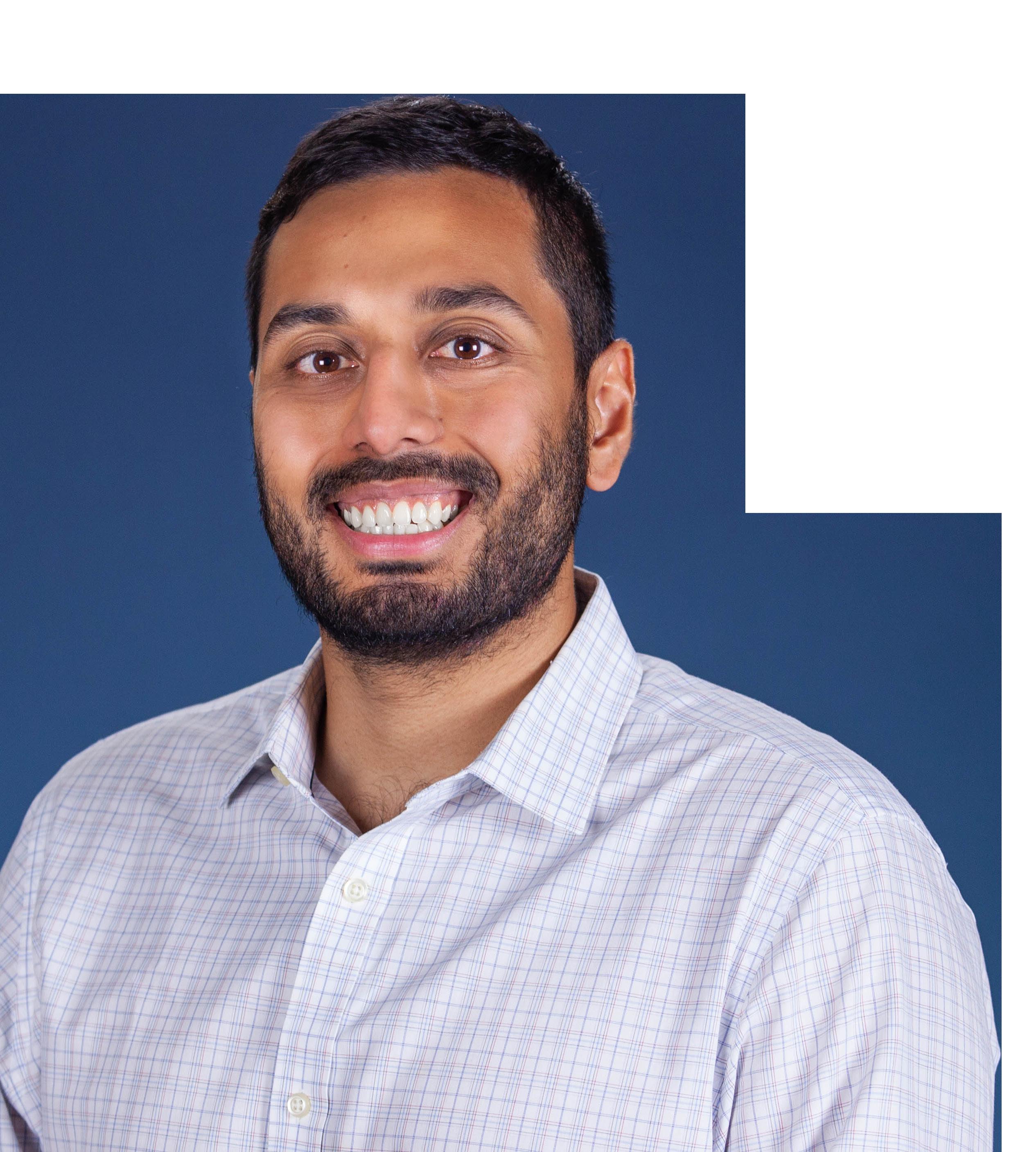
Hometown: Houston, Texas
Education: Medical school: University of Texas Health Science Center at Houston; residency: University of Texas Medical Branch at Galveston; fellowship: Ochsner Clinic, New Orleans
Affiliations: Oneida Health
Organizations: American Arthroscopy Association of North America, American Orthopedic Association, American Orthopaedic Society for Sports Medicine
Family: Wife
Hobbies: Basketball, travel
Orthopedic surgeon in Oneida offers new kind of surgery on knee cartilage. ‘We’re regrowing the patient’s own cartilage cells to repair a cartilage defect that’s causing knee pain,’ he explains
‘It’s generally a very good outcome. In my experience, so long as the patients are selected appropriately and they follow up, I’ve seen very good outcomes. ‘
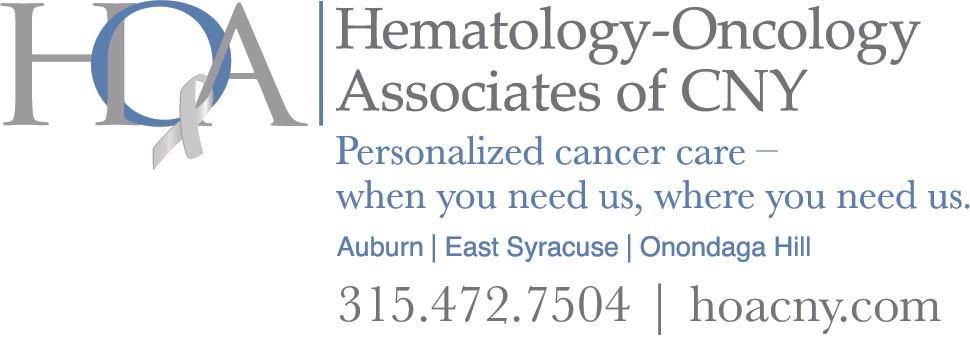


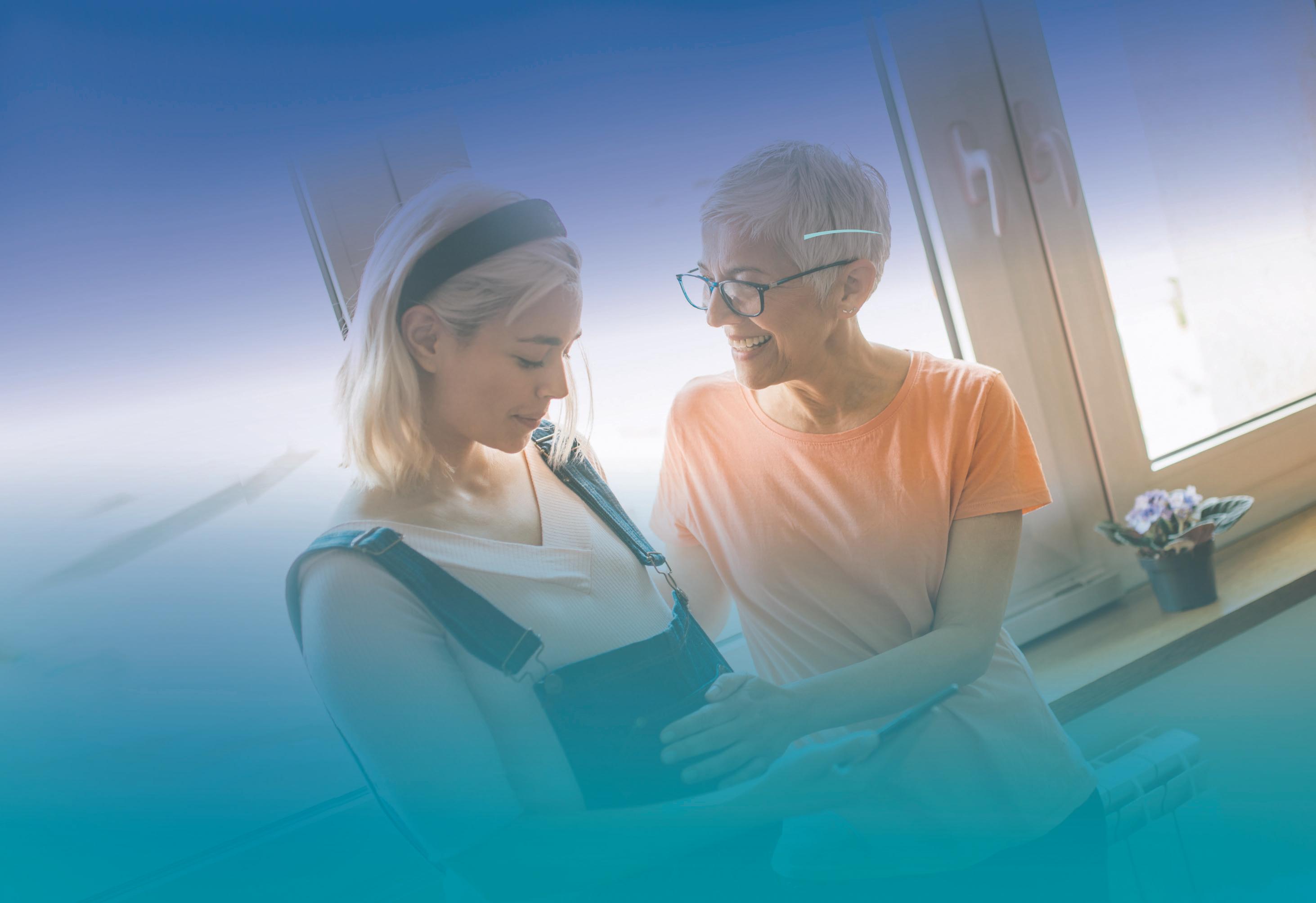
Medicare is finally flexing its purchasing power by negotiating the prices it pays for 10 drugs that treat cancer, arthritis, diabetes and heart disease. Why did it take so long?
It took the passing of the Inflation Reduction Act (I.R.A.) to authorize price negotiations of drugs with pharmaceutical companies.
So why did it take, literally, an act of Congress to negotiate drug prices, especially considering that some 80% of us are in favor of Medicare’s ability to negotiate prices?
Well, 20 years ago, then-Presi-
Big Pharma argues that negotiating prices (remember, on a whopping 10 drugs) will lower their profits and thereby negatively impact innovation.
Interestingly, drug manufacturers spend far more on stock buy backs than innovation or research and development.
Several competing drug man ufacturers sell drugs that combat diabetes, cancer, heart disease, etc. The “winner” of the price negotiation or lowest bidder could capture more if not all the market for the drug and thereby actually increase profits.
Big Pharma won’t even use the term “negotiate” as it spins this all as “big government price controls.”
If negotiating a paltry 10 drugs with Medicare will reduce profits, why then do drug manufacturers negotiate prices with just about every country (England, France, Germany, Canada, to name a few) with national or universal healthcare? It’s because those countries have not tied their hands with laws that prevent them from negotiating and employ their substantial purchasing power to keep prices down and lower costs to taxpayers to whom they have a fiduciary responsibility. It should be noted that all the countries listed have a much lower cost of care per capita than the U.S.
dent George Bush signed a law prohibiting Medicare from negotiating drug prices.
That is the penultimate (or maybe worst?) example of the absurd amount of influence Big Pharma lobbyists have on our elected officials. While negotiations are underway, Big Pharma has filed multiple lawsuits to block the government
and a lot of that can be attributed to paying far less for drugs. There is a lot of moaning from both sides of Congress about government spending. So why are we tying the government’s hands when it tries to act like a business?
from implementing this part of the I.R.A. Big Pharma should consider itself lucky to negotiate considering Medicare does NOT negotiate prices with physicians and hospitals. Medicare SETS the prices for providers of care. So much for the AMA and AHA lobbyists. There is plenty of time for the litigation to play out as the prices won’t take effect until 2026.
due to intense Big Pharma lobbying.
You would think it a slam dunk to allow Medicare to negotiate ALL drug prices. We have almost 65 million seniors on Medicare. That exceeds the total population of Canada which is about 38 million. Yet Canada, with far less purchasing power, negotiates all drug prices where it can. If we had a national health plan covering us all, Medicare would be negotiating prices on behalf of 334 million people. Medicare was about 10% ($888 billion) of the federal budget in 2021. 46% comes from general revenues, 34% from payroll taxes and 15% from beneficiary premiums. So, Medicare drug prices affect ALL of us, not just seniors.
The first 10 drugs Medicare chose to negotiate are: Eliquis blood thinner; Xarelto blood thinner, Januvia for diabetes; Jardiance for diabetes; Enbrel for rheumatoid arthritis; Imbruvica for blood cancer; Farxiga for diabetes, heart failure and kidney disease; Entresto for heart failure; Stelara for psoriasis and Crohn’s disease; and Fiasp for diabetes. These 10 drugs account for $50.5 billion or 20% of total part D costs. (Part D drugs are taken at home while Part B drugs are administered in a provider office.)

If you consider Big Pharma contributions to the campaigns of our elected officials, you’ll understand why Medicare is limited to negotiating just 10 prices and not ALL prices.
The Senate (100 members) averages about $76,000 per campaign or about $7,600,000 over the course of staggered six-year terms.
The House (435) averages about $36,000 per campaign or about $15,660,000 over the course of staggered two-year terms.
These contributions are why the Inflation Reduction Act barely passed.
Apparently, getting reelected is more important than doing the right thing.
The top 10 elected officials receiving the most money from Big Pharma are from both sides of the aisle.
Newcomer senator Raphael Warnock from Georgia leads the pack at $770,000. He has a commanding lead over the rest. In second place is Cathy Rodgers from Washington at $419,000. The next eight are: Scott Peters, California, receiving $400,000; Catherine Masto, Nevada, $382,000; Tim Scott, South Carolina, $351,000; Patty Murray, Washington, $351,000; Mark Kelly, Arizona, $350,000; our Chuck Schumer at $345,000; Brett Guthrie, Kentucky, $343,000; and Maggie Hassan, New Hampshire, $273,000.
Drug companies can easily afford to pay 1,500 lobbyists and tens of millions to campaigns to protect their profits while hospitals and nursing homes, with little to no cash to spare, struggle to stay open.
Most galling is instead of considering themselves lucky to having to negotiate only 10 drugs while Medicare sets payments to physicians and hospitals, some of the drug manufacturers have decided to sue Medicare for restraint of trade and overreach.

Business negotiations over price are commonplace. Drug companies negotiate prices with all the countries with national health insurance.
billion (with a “b”) outof-pocket last year on just the 10 drugs being negotiated.
Lower prices mean less out-ofpocket. Period.
More savings for taxpayers are on the horizon when Medicare can negotiate 15 prices in 2027-28 and then 20 after that. The severely limited number of prices that can be negotiated and the painfully slow implementation timeframe shows how difficult it was to pass the I.R.A.
No one really knows the price of a particular drug. It depends on whether you’re self-pay or covered by Medicare, Medicaid, or commercial insurance.
Commercial carriers or pharmacy benefit managers negotiate supposed discounts, but often off nebulous inflated prices quoted by the manufacturer. You never know if you’re getting a good deal. Basical ly, there just isn’t price competition among drug manufacturers as there is in most markets. Once Medicare negotiates a price, (which both par ties agree to) it should finally provide the public some price transparency.
But when Medicare flexes its muscle, they sue.
George W. Chapman is a healthcare business consultant who works exclusively with physicians, hospitals and healthcare organizations. He operates GW Chapman Consulting based in Syracuse. Email him at gwc@gwchapmanconsulting.com.

The U.S. government's 988 Suicide and Crisis Lifeline is expanding its reach to help more people.
The crisis line has now launched services in American Sign Language (ASL) to help callers who are deaf or hard of hearing.
The ASL services were launched in September, according to the U.S. Department of Health and Human Services.
“Individuals across America who use ASL as their primary language can now readily access the support they need during a mental health crisis,” Health and Human Services Secretary Xavier Becerra said in an agency news release. “With the introduction of 988 ASL services, we are taking a significant stride forward in providing inclusive and accessible support for the deaf and hard-of-hearing community."
The services use a videophone device that transmits video and audio. It can be reached by clicking “ASL Now” on 988lifeline.org. Callers can alternatively call 1-800273-TALK (8255) but will soon also be able to directly dial to 988 by videophone.
"After years of advocacy to ensure that 988 is available to everyone not only through voice calls, but also texting and video for sign language users, the National Association of the Deaf (NAD) is thrilled that the 988 Suicide & Crisis Lifeline is now available to use through video calls in sign language,” said NAD CEO Howard A. Rosenblum. “We encourage anyone going through a crisis or thinking about suicide to contact 988 in any way preferred -- voice, text, or sign language."
The new move is part of an ongoing effort by the HHS's Substance Abuse and Mental Health Services Administration (SAMHSA) to add accessibility to behavioral healthcare.

An earlier update added Spanish-speaking services by text and chat.
“We're talking about mental health in a way that we have not historically talked about it,” said Monica Johnson, director of the 988 & Behavioral Health Crisis Coordinating office at SAMHSA.
The 988 Suicide and Crisis Lifeline was launched last year for anyone who is experiencing a mental health crisis, emotional distress or contemplating suicide. It is an evolution from the former National Suicide Prevention Lifeline.
Making it possible to reach help by dialing only three digits was meant to make it easier to remember.
“me time” to meditate and set my intentions for my day.
Fall is such a special time of year. For me, it means all good things: relaxing in front of a cozy fire, making pumpkin soup on Sunday afternoons, donning my well-worn leather jacket for long walks and turning my attention to all those inside projects I neglected over the summer.
The brilliant colors, autumnal aromas and industriousness that arrive with the falling leaves really appeal to me. But this hasn’t always been the case.
After my divorce, the month of October left me feeling melancholy. I missed sharing the beauty of the season with a special someone. And I missed the sunshine as daylight waned.
Nostalgia and wistfulness would creep in and I just wanted to retreat into myself. For those who live alone, the month of October has unique challenges.
Not one to wallow in a “poor is me” state of mind, I began to develop and employ some strategies to rekindle my love of the fall season. It can be a great time to mix it up, get busy and expand your horizons.
Below are elements of my annual fall “game plan.” Take a look and see if one or more of these suggestions might add a little color to your life palette this fall:
• Tackle indoor projects: Fall is a great time to accomplish all those
nagging indoor projects on your to-do list. I have a long list and I keep it right in front of me — a daily reminder that I have plenty of home improvements to tackle, both large and small.
Too much idle time is not a friend at any time of year, but it can become downright unfriendly when gray clouds appear and the temperature drops. So, let’s get busy: organize your storage space, do some touch-up painting, update your will or clean out your inbox.
There’s nothing like being productive to beat the autumn blues.
Don’t I know it. I just finished coating my flat-roof porch with a sticky tar sealant. Confession: it was messier than it was fun, but still, I’m proud of my accomplishment. It lifted my spirits.
• Get up and get going: Staying active when there’s a chill in the air can be difficult. I can remember many a cold morning when all I wanted to do was hit the snooze button, pull up the covers and stay in bed.
As nice as sleeping in can be from time to time, I don’t recommend it as a steady diet.
In my experience, there's no better way to start your day than to wake early to start your day. In the early morning’s peace and quiet, there is glorious time to reflect and feel gratitude. I use this important
About 6 million kids have been diagnosed with ADHD as of 201
Lots of children and adolescents have the condition known as ADHD, or attention-deficit/hyperactivity disorder.
What should parents know? A number of treatments exist to help with functioning, including medications approved by the U.S. Food and Drug Administration.
Typically, ADHD begins between ages 3 and 6, according to the U.S. National Institute of Mental Health. It can continue into adulthood.
People can experience one of three types of ADHD. They are predominantly inattentive, with trouble focusing, following instructions and finishing tasks; predominantly
hyperactive–impulsive, with behavior of being “constantly on the go,” talking excessively and interrupting others; and a combination of those symptoms.
An increasing number of children are being diagnosed with ADHD. About 10% of children aged 3 to 17 — or about 6 million kids — have been diagnosed with ADHD as of 2019, according to the U.S. Centers for Disease Control and Prevention.

Boys, at 13%, are more likely than girls, at 6%, to be diagnosed with ADHD.
“Boys are also more likely to have the hyperactive-impulsive type. This type of ADHD is easier to spot
As the morning brightens, my energy grows, as does my appreciation for the precious day ahead me.
• Start moving and enjoy the great outdoors: Fresh air, sunlight and even a gentle rain can be invigorating first thing in the morning. I find a sunrise walk boosts my energy and kickstarts my day. Do I always feel like layering up and taking a walk every morning? No. Do I feel better after I make the effort? Yes, without fail.
I love an unhurried solitary walk to clear my head and be mindful. But I also love a walk with my sister, Anne, or good friend, Kate, to enjoy their company and avoid the Siren song of isolation as the days grow short and get colder.
• Learn something new: Going back to school and fall go hand in hand. Who among us isn’t reminded of the nervous excitement associated with returning to school in the fall? It’s a great time to expand your intellectual horizons.
Each fall I identify a new skill or subject to learn. Last year, I researched how to divide and relocate perennials (my irises and peonies); this fall, I’m signing up to learn French on Duolingo, the free language-learning app.
Continuing education opportunities are abundant in this community and online. Check out colleges and universities, community centers, arts and cultural institutions, your local library, and workshop listings for class and workshop offerings.
• Invite people in: Over the years, I’ve discovered a few simple and manageable ways to bring people into my world and into my home. One way is to organize a gathering around a TV show or series — yes, around the TV.
For years, I invited my single friends over to watch “Downton Abbey” with me on Sunday nights. I provided the soup and salad; they provided the good company.
So, what’s your pleasure? Whether it’s football, a favorite weekly sitcom, or “Ted Lasso” on Apple TV — all of these and other TV shows can become reasons to bring friends and family together. The benefits? You’ll hone your cooking skills (boy, do I now have some great soup recipes!) and you’ll connect with people you care about.
What better way to enjoy a nice fall evening.
There are so many wonderful and meaningful strategies to enjoy the fall season and to ward off the blues that can sometimes emerge during this changing time of year. But these strategies require effort — conscious, creative effort.
If you are feeling sluggish, lonely or isolated, try a few of the strategies above. They have stood me in good stead and have reinvigorated my love for the fall season.
If you, too, are ready to turn over a new leaf, October is the perfect time!
Gwenn Voelckers is the founder and facilitator of Alone and Content empowerment workshops for women (now on hiatus) and the author of "Alone and Content: Inspiring, empowering essays to help divorced and widowed women feel whole and complete on their own" To contact Voelckers or purchase her book, visit www.aloneandcontent.com
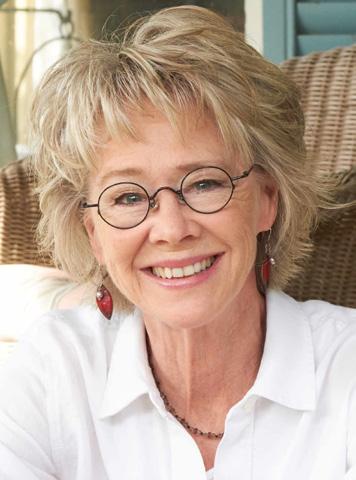
than the quieter child who is inattentive,” said child psychiatrist Tiffany Farchione, who reviews ADHD drugs at the FDA.
Untreated ADHD can have serious consequences, the FDA warns, including falling behind in school, having difficulties with friendships and experiencing conflicts with parents.
Children with untreated ADHD also have more emergency room visits and are more likely to have self-inflicted injuries. Meanwhile, untreated adolescents are more likely to take risks.
A visit with your child's pediatrician can help determine if your child has ADHD. Also have your child's vision, hearing and anything else that might contribute to inattention checked.
Stimulants and non-stimulants are both approved by the FDA to help reduce symptoms of ADHD in children as young as age 6.
Containing various forms of methylphenidate and amphetamine,
stimulants have a calming effect on children with ADHD, Farchione said. They are thought to increase brain levels of dopamine, a neurotransmitter associated with motivation, attention and movement.
Approved non-stimulants are Strattera (atomoxetine), Intuniv (guanfacine), Kapvay (clonidine) and Qelbree (viloxazine).
Some children with ADHD also receive behavioral therapy to help manage symptoms and learn coping skills. Community support groups and schools may also provide some help.
FDA-approved medications have been tested for safety and effectiveness. Clinical trials will now look at their safety and effectiveness in children aged 4 and 5.
“We know ADHD medications are being prescribed for younger children, and we think it's essential that the data from clinical studies reflect the safety and effectiveness for this age group,” Farchione said in an FDA news release.

Saint Agatha Foundation, a nonprofit organization providing financial assistance for unmet financial needs of CNY breast cancer patients, recently announced it will leverage October’s National Breast Cancer Awareness Month to raise awareness of the disease and kick-off its own campaign focused on raising awareness of its mission.
Founded in 2004 by Laurie Mezzalingua, taken by breast cancer in 2009 after a years-long battle with the disease, Saint Agatha Foundation has provided $17.5 million in financial support to over 10,000 breast cancer patients in Central New York to date; funds are distributed to patients via both medical and non-medical service providers who apply on behalf of their patients or clientele.
“Saint Agatha Foundation joins many other institutions in Central New York in recognizing National Breast Cancer Awareness Month as a way to draw attention to the continuing and critical fight against breast cancer,” says Kathy Mezzalingua, chairwoman of the Foundation and Laurie’s mother. “We’re also taking this opportunity to spotlight our unique mission of providing financial support to breast cancer patients in our community, to focus on overcoming their diagnosis instead of worrying about unmet financial stress they may be facing.”
Mezzalingua added that bills the foundation can assist with, once insurance has done its part, can include everything from clinical items like lab tests, infusion, radiation therapy, doctor’s appointments to non-medical items like child care, transportation, household and legal expenses.
The foundation’s new awareness campaign will include advertising, public relations, social media, grassroots presentations to community groups, and outreach to – and training for – providers seeking to apply for funds to assist their patients in need. Additionally, Saint Agatha Foundation will participate in a range of breast cancer awareness month activities in October.
• Saint Agatha Foundation Community Partner Convening will be held Oct. 11 at the Crowne Plaza Hotel and Conference Center in Syracuse. This event served as an opportunity for medical care and other service providers to learn more about Saint Agatha Foundation and how the

organization assists breast cancer patients in Central New York; connect with other partner organizations; and share ideas and feedback with the foundation. This meeting is intended for those who work with breast cancer patients directly, such as breast cancer patient navigators, social workers, financial counselors, among others. For more information reach out saintagathafoundation@nptrust. org by Oct. 2
• Saint Agatha Foundation will be a lead sponsor at the American Cancer Society Making Strides Against Breast Cancer walks in Syracuse at Clinton Square on Oct. 15 and in Utica at Mohawk Valley Community College on Oct. 22.
– Those wishing to register and participate in the October 15 walk should visit: https://secure. acsevents.org/site/STR?pg=entry&fr_id=105628
– Those wishing to register for Oct.22 walk should visit: https://secure.acsevents.org/site/STR?pg=entry&fr_id=105631.
– Those attending either event are encouraged to visit the Saint Agatha Foundation team at each event’s check-in area or Survivor Tent.
• Saint Agatha Foundation is also a presenting sponsor at the E-Race Cancer Half Marathon and 5-K in Bridgeport on Oct 22 in support of the foundation’s valued partner, CancerConnects. To find out more or sign up, interested parties should visit: E-Race Cancer Half Marathon, 10K & 5K (runsignup.com)
For more information, visit www. saintagathafoundation.org.

The next issue of In Good Health — MV’s Healthcare Newspaper will bring a wide variety of stories and article about seniors, aging, senior facilities and more. To advertise, please send an email to editor@mvhealthnews.com
Select blemish-free squashes that feel heavy and firm, especially near the stem ends. Delicata’s thin, easy-to-slice skin does not need to be peeled before cooking. Also, this squash holds its shape during cooking, making it an excellent choice for stuffing and baking. As mentioned, whole delicata keep for several months if stored in a cool, dry place.
When I discovered delicata squash a few years ago, I couldn’t stop talking about it. I still can’t! The taste, the texture, the nutrition, the delicate skin…oh, if only it were available year-round.

The good news is, they’re in season now through November. And the even better news is, they can be stored safely for about two to three months in a cool, dry place.





But here’s the best news of all about this striped, pleasantly sweet winter squash: it’s chock full of nutrition, particularly vitamins C and A — two vitamins that boost immune system health. Right now, with flu and cold season bearing down on us, bolstering this all-important system seems wise.
Like other winter squashes, delicata is super low in fat, sodium, cholesterol and calories (only 40 per cup). And while it may have more carbs than some vegetables (10 grams per cup), it is by no means a carb-watcher’s nightmare. As a comparison: 1 cup green beans (7 grams), 1 cup corn (27 grams), 1 medium potato (35 grams), and — okay, this is not a vegetable but I couldn’t resist
— 1 soft pretzel (80 grams).
Delicata’s natural carbs are “complex” and take longer to digest, versus the “refined” carbs found in processed foods, such as sugary drinks, pastries, white bread, most snacks, and many cereals. The good fiber-rich carbs in delicata squash provide longer-lasting energy, more stable blood sugars, and fiber-driven heart protection. The bad fiber-depleted carbs in most processed foods, on the other hand, tend to cause spikes in blood sugar levels, which can trigger hunger and lead to food cravings. Numerous studies support that excessive refined-carb consumption may pave the way for health problems, such as obesity, Type 2 diabetes, and heart disease.
Unlike other hard-skin winter squash, delicata’s skin is edible, adding a nutty deliciousness to an already yummy squash. But that’s not all it adds: its skin is also rich in fiber, vitamins, minerals, and antioxidants. Antioxidants are beneficial molecules that fight free radicals, which, when elevated in your body, have been linked to heart disease, cancer, and other diseases.


ROASTED DELICATA SQUASH

Serves 4
1 delicata squash, washed and dried
1 tablespoon olive oil
¼ teaspoon kosher salt coarse black pepper, to taste
¼ cup grated parmesan cheese

1. Preheat oven to 425° F. Line a large baking sheet with parchment paper; set aside.

2. Trim the ends off the delicata squash, then slice the squash in half lengthwise and scoop out the seeds. Slice the seeded halves into ½-inch thick slices (half circles) and place them in a large bowl.
3. Drizzle the olive oil, salt, and pepper over the squash slices, tossing well to coat. Transfer
¼ cup whole-wheat panko breadcrumbs
1 teaspoon dried thyme
1 garlic clove, minced
1 teaspoon lemon zest (optional)
to the prepared baking sheet, arranging the slices in an even, flat layer.
4. In a small bowl, combine the parmesan, breadcrumbs, thyme, garlic, and lemon zest.
5. Sprinkle the parmesan mixture over the squash, pressing to adhere.
Roast in the center of the oven until tender and golden brown, about 25 minutes.
Meet Carol Hamlin Buczek, a 60-year-old Mohawk Valley resident with a busy career and an active volunteer life. As president of Tours by Design in Hinckley and very involved as a volunteer with the American Cancer Society, she’s not just surviving, she’s thriving.

She was told she had breast cancer on June 9, 2015.
“That date does stick in my head! When you hear that, your life changes! It’s never the same,” she said. “For me, I never had a lump. But just before my yearly mammogram, I noticed a strange indentation.”
“I had an ultrasound, then a biopsy. Half of me was thinking ‘I’ll be OK’; half of me was thinking ‘This is it!’” she added. “The day after my biopsy, the doctor called me and said ‘You have cancer.’ That did throw me for a loop!”
Buczek had triple-negative breast cancer, a rare, aggressive type of breast cancer. According to the American Cancer Society, triple-negative breast cancer grows and spreads faster, has fewer treatment options and tends to have a worse prognosis. The term triple-negative refers to the fact that the cancer cells don’t have estrogen or progesterone receptors and don’t make much of one protein.
The cells test ‘negative’ on all three tests. It accounts for 10%-20% of breast cancers.
“I had the full gambit of treatment,” continued Buczek. “I had a lumpectomy, which is a breast conserving surgery. Then I had 24 rounds of chemotherapy each week, and 36 rounds of radiation therapy. I went through treatment for two weeks shy of one year.”
As Buczek is self-employed, owning her own business, Tours by Design, which provides quality bus tours for groups and individuals, she needed to continue to run her business, so she worked most days. A very brave and tough thing to go through.
“That was a difficult year,” she said.
However, her difficulties didn’t end with her last treatment. As her treatment had been aggressive, there were many crushing side effects. Some of these side effects from the chemo and radiation therapy are still with her.
“Doctors treat the cancer, but they don’t always tell you about the side effects. The side effects are devastating!” she said. “I was so tired; I had no energy, no strength. Some of the side effects are visible, some are not visible. Some will be with me
forever. They don’t go away.”
“I learned about side effects from the support groups I went to,” she continued. “I started with an online group for people with triple-negative breast cancer. Then I went to in-person support groups at Slocum-Dixon and Faxton-St. Lukes. Support groups are incredibly valuable. You can share things you don’t want to share with your family. You don’t want your family to know your fears.”
“I’ve gradually gotten back in control of my life,” she continued. “I used to wake up every morning thinking about this cancer I had, and it would be the last thing I thought about before I fell asleep. It consumed me.
“I did move past it. Though I definitely have concerns — like will it come back?”
“At one point my sister said ‘You got this for a reason. How can you make it a positive?’ I thought about that and considered what I could do to make it a positive. That’s why I became an advocate,” she said.
As an advocate, Buczek gives survivor speeches and is active on the Making Strides Team, which raises money for cancer patients. “We provide services to patients, like rides to their treatment, overnight
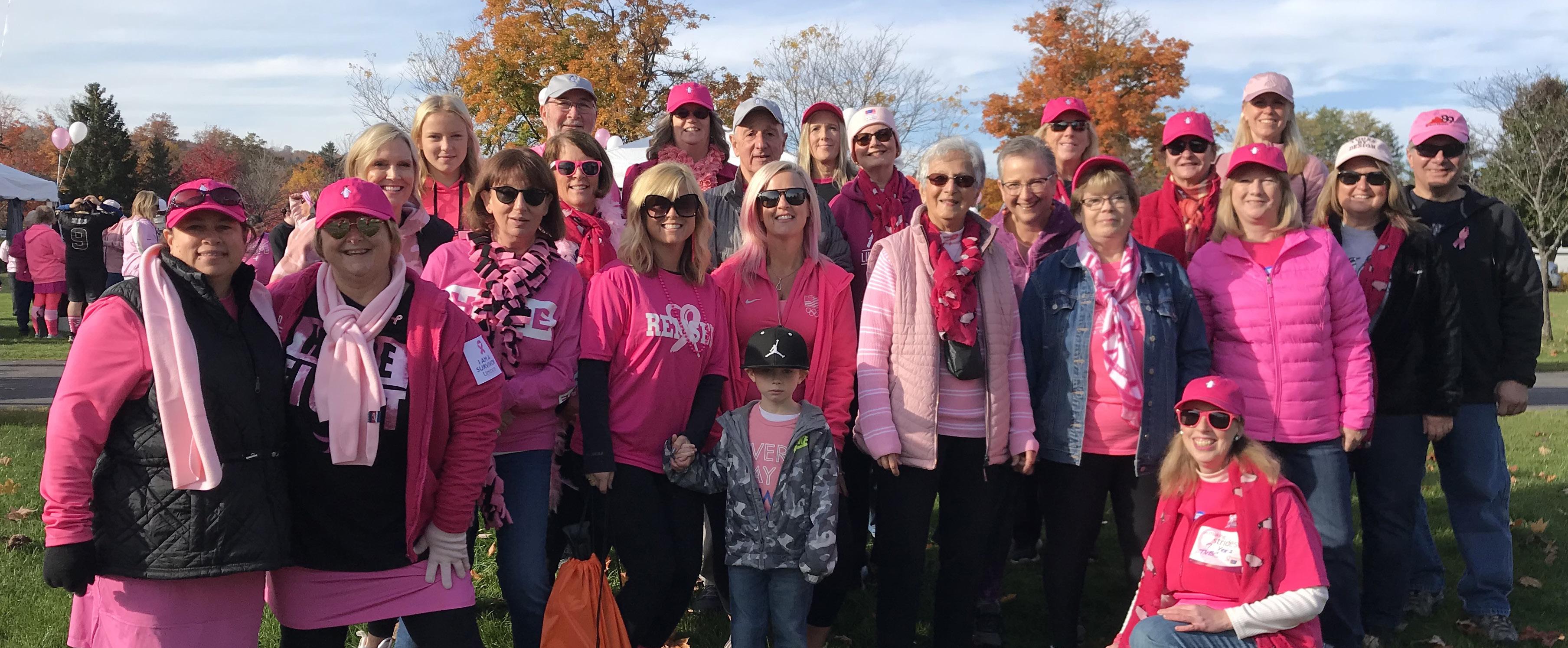

stays for the patient and their family for their treatments,” she explained. And it funds the Reach to Recovery program, which matches patients with survivors who have been trained to answer their questions and provide much needed support.
Making Strides Against Breast Cancer of Utica, presented by Upstate Cancer Center, is a noncompetitive walk for breast cancer survivors, people living with breast cancer and those who care about them. The annual walk will be Oct. 22. For more information about the walk, call 3152527-7386 or email Robert Elinskas at robert.elinskas@cancer.org
“It does make a difference,” Buczek said. “This is why we raise the money.”
In addition to funding services for local breast cancer patients, the funds that are raised by the walk also go towards life saving breast cancer research.
“People don’t understand breast cancer; a lot of people downplay it, they say ‘At least it’s not as bad as lung cancer,’ or other things to downplay it. But people do die from breast cancer,” she said.
“Get screened,” she urged. “Be aware. The earlier you treat it, the better your outcome will be!”
Adiagnosis of breast cancer comes with many tough questions, but one of the biggest is what stage your cancer is.
Millions of women struggle with such questions every year: Breast cancer is the most common cancer in women in the United States, with the sole exception of skin cancers, according to the American Cancer Society. It accounts for roughly onethird of all new female cancers each year.
Once you receive a breast cancer diagnosis, your doctor will determine the stage of your particular cancer using the results of your diagnostic tests. Knowing the specific stage of your cancer helps determine the best treatment options for you, as well as your expected survival rate.
The most common tool physicians use to stage breast cancer is the American Joint Committee on Cancer's (AJCC) TNM system. T stands for the size of the tumor, N for whether the cancer has moved into lymph nodes, and M indicates whether the cancer has spread to other places in the body. Numbers or letters after T, N and M provide more
details about each factor. Higher numbers mean the cancer is more advanced.
According to the American Society of Clinical Oncology (ASCO), breast cancer stages are broken down into five levels: Stages 0, 1, 2, 3 and 4. Below you will find expert guidance on each of the stages, along with the associated five-year relative survival rate.
In stage zero (0) breast cancer, also called noninvasive or in situ cancer, the disease is only in the ducts of the breast and has not spread to the surrounding breast tissue (Tis, N0, M0).
Stage 0 breast cancer survival rate is 99%.
Stage IA: In this stage, the tumor is small, but has invaded the breast tissue. There is none in the lymph nodes (T1, N0, M0).
Stage IB: The cancer has spread to the lymph nodes and is larger than
0.2 mm but less than 2 mm. Either there is no sign of a tumor in the breast, or it is 20 mm or smaller (T0 or T1, N1mi, M0).
Stage 1 breast cancer survival rate is 86% (Stage IB) to 99% (Stage IA).
Stage 2 breast cancer
Stage IIA:

• While no evidence of a tumor is found in the breast, the cancer has spread to one to three axillary (under arm) lymph nodes. The cancer hasn't spread to other parts of the body (T0, N1, M0).
• A tumor of 20 mm or less is found in the breast, and the cancer is in one to three axillary lymph nodes (T1, N1, M0).
• While the tumor is larger (greater than 20 mm but not more than 50 mm), it has not spread to the axillary lymph nodes (T2, N0, M0).
Stage IIB:
• The tumor is greater than 20 mm but not larger than 50 mm. It is also found in one to three axillary lymph nodes (T2, N1, M0).
• The tumor is larger than 50 mm but none is found in the axillary lymph nodes (T3, N0, M0).
Stage 2 breast cancer survival rate is 86% to 99%, depending on whether it has spread to the lymph nodes.
Stage 3 breast cancer
Stage IIIA: This stage involves a tumor of any size which has spread to four to nine axillary lymph nodes or to internal mammary lymph
nodes, but has not spread to other parts of the body (T0, T1, T2, or T3; N2; M0). This stage may also have a tumor larger than 50 mm which has spread to one to three axillary lymph nodes (T3, N1, M0).
Stage IIIB: The tumor has invaded the chest wall or has caused ulceration or swelling of the breast. There may or may not be cancer in as many as 9 axillary or internal mammary lymph nodes. It hasn't spread to other parts of the body (T4; N0, N1 or N2; M0). It also may have been diagnosed as inflammatory breast cancer.
Stage IIIC: Any size tumor that has invaded 10 or more axillary lymph nodes, the internal mammary lymph nodes, or lymph nodes under the collarbone. It has not spread to other parts of the body (any T, N3, M0).
Stage 3 breast cancer survival rate is 86%.
This stage involves a tumor of any size. The cancer has spread to other organs, including the bones, brain, liver, lungs, distant lymph nodes or into the chest wall (any T, any N, M1). Metastatic breast cancer found when cancer is first diagnosed only occurs about 6% of the time and may be called de novo metastatic breast cancer. Usually, metastatic breast cancer isn't found until after a previous diagnosis and treatment of early-stage breast cancer.
Stage 4 breast cancer survival rate is 30%.
 By Deborah Dittner
By Deborah Dittner

 By Deborah Dittner
By Deborah Dittner
Over the past couple years, we have seen an increase in cancer of various types. We have seen cancers come back with a vengeance after being in remission. We have seen younger people develop cancer out of the blue.
Chronic disease has also been on the rise: hypertension, cardiovascular concerns, autoimmune concerns, and diabetes to name a few.
These conditions have often been seen before cancer develops.
Addressing chronic disease may be what you need to first focus on before other forms of illness sets in. Don’t wait until you are ill before looking at what and how you can take care of yourself first. Chronic disease and cancer require a wholebody approach. Let’s delve into where to start and how to proceed.
Initially you need to slow down. Breathe. Listen to what your heart and body is saying to you. The breath will help to decrease stress and anxiety (and blood pressure). Sit comfortably with both feet flat on the floor and your hands either on both knees or placed in your lap. Close your eyes and inhale to the count of eight…hold for the count of eight… release for the count of eight…and hold for the count of eight.
After a few rounds of this breathing method, called box breathing, you will feel more in control and relaxed.
Finding the best way for you to manage stress is needed so as not to weaken your immune system, alter your sleep habits, or create more illness. As mentioned earlier, breathing exercises are a great way to reduce many stressful situations. Other forms of stress reduction include yoga (the added benefit of movement), meditation (even as little as five to 10 minutes is helpful), getting out in nature (again more movement), and massage (so relaxing).
Inflammation creates all sorts of havoc in the body. Eating whole nutrient dense plant-based foods will help decrease inflammation (including blood pressure, heart conditions and diabetes). Eliminate dairy and other animal products as these can consist of hormones. Eliminate sugar as it feeds cancer. Research shows the average American consumes approximately 152 pounds of sugar per year. Choose low-glycemic fruits as a dessert. Make at least half of your plate plant rich and (if not vegan) one quarter of your plate a lean, clean protein.
Some foods that have been referred to as cancer protective are apples, cruciferous vegetables (broccoli, cauliflower, cabbage and Brussel sprouts), vitamin C rich fruits and vegetables (spinach, sweet potatoes, pineapple, watermelon and kiwi), beans are high in fiber aiding in the elimination of toxins, Brazil nuts (three to four daily) provide cancer-fighting selenium, and don’t forget your leafy greens (beet greens, kale and collards).
Consider purchasing a juicer and juice, juice, and juice some more. Use organic fruit and vegetables as much as possible. When juicing, use a three to one ratio of veggies to fruit.
Adding ginger (anti-inflammatory and gut healthy), turmeric (anti-inflammatory), cinnamon, nutmeg and cloves (anti-cancer compounds) and lemon (aids in alkalinity) will add to the flavor. Eating whole nutrient dense foods on a daily basis will help provide the necessary elements for your body to decrease your risk of chronic disease and cancer.
Physical movement is necessary to stay strong.
Exercise boosts immunity, increases endurance, builds muscle, reduces inflammation and provides added energy. With daily movement, you will be better able to handle

chronic disease and cancer treatments and procedures, and recover more quickly. It is very important to commit to some form of exercise (yoga, Pilates, weights, swimming, tai chi, dance, walking) on a regular basis beginning with 10 minutes and building to 30 minutes or more. Consider a personal trainer if you do not know where to start. They will help guide you and create a program specifically designed just for you. If you are accustomed to sitting a lot of the day, consider trying chair yoga to get the body moving. You’ll be amazed how much better you will feel once you take action.
Nightly restorative sleep for seven to nine hours is healing to the body allowing you to best respond to treatment(s). If you are a coffee drinker, stop by noon. If you drink alcohol, decrease the amount and have it with a meal. Alcohol disrupts melatonin necessary for sleep and blood sugar levels. Start approximately one hour before you are ready to go to sleep with a nightly routine.
Take an Epsom salt bath (excellent in magnesium) with therapeutic grade essential oils, have a cup of herbal tea, or read a book or magazine. Eliminate all electronics (TV, iPhone, computer) as these stimulate the mind. Create a calming atmosphere. Keep the temperature cool and dark with curtains to block all light. Climb into bed and journal. Write whatever comes to mind about your day. Also write about three things you are grateful for and why.
End with an affirmation such as “I am healing every day.”
Let’s also look at the environment. The type of body care and cleaning products need to be chosen with caution. Many personal care products contain ingredients that have not been approved by the FDA. Companies are not required to test their products and can leave off hazardous chemicals from the ingredient list. Many of these chemicals that may increase the risk of cancer, are hormone disruptors, which can cause infertility and even birth defects. Cleaning products for the home fall into the same category. Consider DIY cleaning products (many recipes can be found online) consisting of vinegar, baking soda, lemon and more.
Consult with your primary provider and support team before starting a new regimen. Enlist helpers, family or friends to be by your side providing encouragement and a listening ear while making changes to improve your overall health and wellbeing.
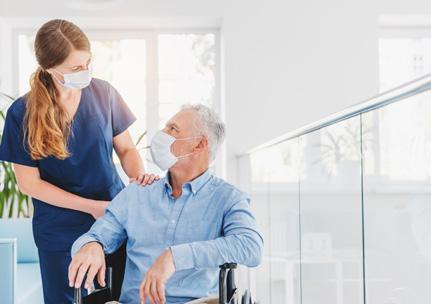
 Dittner
Dittner
Women tend to greet menopause with mixed emotions. Some of us are nervous about what we‘re going through. To be sure, menopause is unlike anything we‘ve ever gone through. Some of us will breeze through it with no trouble, relieved not to worry about periods or getting pregnant. For others, the transition brings a horde of unpleasant symptoms.
“Menopause is a natural transition,” said physician Samuel Badalian, chairman of obstetrics and gynecology at Bassett Healthcare Network and professor of obstetrics and gynecology at Columbia University Vagelos College of Physicians and Surgeons. “It’s a normal event in the life of every woman.”

Badalian shares valuable information all women should know:
The average age menopause begins is around 51½. If you haven’t had a period for one year, you’re in menopause, said Badalian. For some women, it starts in their 40s, or even late 30s.
There are three stages:
• Perimenopause is when your body is making the transition to menopause. Your periods become irregular. Your level of estrogen — the main female hormone in your body —rises and falls unevenly. Your menstrual cycles may lengthen or shorten. You may also experience menopause-like symptoms, such as hot flashes, sleep problems and vaginal dryness.
During this stage, it’s still possible to get pregnant. Don’t give up on
your birth control yet.
The average length of perimenopause is about four years. For some, it may only be a few months; for others, it could be even longer.
When you‘ve gone more than 12 months without having a period, then you’re in menopause.
• Postmenopause is the time after you haven’t had a period for an entire year. During this stage, menopausal symptoms, such as hot flashes, may get better. However, some people continue to experience menopausal symptoms for a decade or longer after menopause.
2.What are typical symptoms?
There will be changes in your normal pattern of periods, said Badalian. You may have changes in your sleep pattern. Mood changes are common, with irritability, anxiety and fluctuating moods. Intercourse can become painful due to vaginal dryness. Your pelvic floor muscles weaken, causing less bladder control and more urinary tract infections.
Hot flashes are one of the most frequent symptoms of menopause, a brief sensation of being very hot. The intensity, frequency and duration of hot flashes differ for each individual. They become less severe with time.
When they experience these changes, many women think they need hormone replacement therapy. But we prefer to start with non-hormonal changes.
3.What are non-hormonal ways to relieve these symptoms?
Many women make significant
Scientists have spotted an elevated risk of stroke in women who became pregnant after fertility treatments.
Although the absolute number of strokes reported in the new study were low, women seeking fertility treatment should be made aware of the increased risk, said senior study author, Cande Ananth, chief of epidemiology and biostatistics at the Robert Wood Johnson Medical School in New Jersey.
Ananth offered possible explanations for the link, including that infertility procedures can cause physiological changes because women receive
large amounts of estrogen during the treatments. This can lead to increased clotting, which is a strong risk factor for stroke.
“We know that women who receive infertility treatment have certain vascular complications, typically an increased risk of preeclampsia and placental abruption,” Ananth told the New York Times.
“People who receive the treatment receive it for a reason. Perhaps there are different biological characteristics,” among women seeking treatment, Ananth added.
In the study, researchers analyzed the cases of 31 million patients
changes without hormone replacement therapy. By taking phytoestrogen and making life style changes, the majority of women feel great and don’t need anything else, Badalian said.
Phytoestrogens are an estrogen-like compound derived from plants. “Phytoestrogens mimic natural hormones,” said Badalian. They’re found in are soybeans, edamame and other legumes, nuts, garlic, celery, carrots, sweet potatoes, apples, pomegranates, rice and wheat.
Supplements like black cohosh are an increasingly popular alternative, especially for hot flashes. St. John’s Wort is especially good for reliving symptoms, added Badalian. Also, vitamin B complex helps. Take one to two tablets each day.
Lifestyle changes that help include drinking a lot of water and sleeping in a cool bedroom for hot flashes. Use an oil-based lubricant for intercourse, like Z magic.
If that doesn’t work, said Badalian, your doctor can prescribe a local estrogen cream to prevent UTIs and improve bladder control.
As your pelvic flood muscles weaken during menopause, strengthening them with Kegel exercises is important. It’s important to know how to do it correctly to target the right muscles. This can probably be best explained by your gynecologist or see the Mayo Clinic’s online description.
Women gain weight during menopause; everyone gains five pounds in the belly. Do exercises for your abdominal muscles, suggested Badalian.
We also can prescribe medication like an SSRI (antidepressant) that will help hot flashes and is nonhormonal.
4.What about hormone replacement therapy?
We don’t usually start hormone therapy because of its health risks, he said. If a woman needs hormone therapy, we won’t prescribe it for over five years or after age 65.
When the measures mentioned above don’t help enough, we consider hormone therapy. Signs that we need to prescribe it: if she doesn’t function, can’t work due to her symptoms or has such bad hot flash-
who had a hospital delivery between 2010 and 2018 in 28 states. This included more than 287,000 women who had infertility treatments.
They found that women who had undergone the treatments faced twice the risk of bleeding in the brain, known as hemorrhagic stroke. They also had 55% greater risk of ischemic stroke, when blood supply to the brain stops.
About 37 women were hospitalized for stroke for every 100,000 women who had fertility treatment.
About 2% of U.S. births involved fertility treatments, such as intrauterine insemination, assisted reproductive technology, use of a surrogate and fertility preservation procedures.

Some studies have linked the treatments to increased risks during a pregnancy, though they are generally considered safe, the Times reported.
While this study, published Aug.
es that she can’t function. If she has vaginal dryness and her family life is in crisis, we’ll prescribe it. We also prescribe it if menopause starts early.
5.If I’m a smoker, does that make a difference?
As you know, smoking is always bad, but it’s especially bad during menopause, it will cause significant problems. If you’re a smoker, your estrogen levels will go down faster, you’ll age faster, look older and your hot flashes will be worse. Don’t smoke as you’ll increase your symptoms so much.
Every woman‘s journey through menopause is unique. Some women find it to be a difficult time, while others don’t have any problems. The experienced gynecologists at Bassett Healthcare Network provide counseling, education, and treatment for meno-pause and a full range of women’s health conditions.
For more information on what to do, visit www.nia.nih.gov/health/ hot-flashes-what-can-i-do
30 in the journal JAMA Network, found these risks, another study of women in Scandinavian countries published earlier this month in the journal JAMA Cardiology did not. That study included 2.4 million women.
“Women face unique sleep disorders because of the stages of their life,” according to physician assistant Caroline Larrison of the Mohawk Valley Health System Sleep Disorder Clinic. “Menstrual cycles, pregnancy and menopause all affect sleep differently.”

Biological conditions unique to women affect how well a woman sleeps. In different stages of our lives, our hormonal levels change. These hormonal changes — associated with menstruation, pregnancy and menopause — can contribute to sleep problems.
The cramps, headaches and bloating that often are a part of the menstrual cycle may cause sleep disturbances for many. Women with severe PMS are affected the worst
and often have disturbing dreams, daytime sleepiness and trouble concentrating.
Sleep problems can happen at any time during pregnancy.
“Many women have insomnia that’s caused by pregnancy,” said Larrison. “They need more sleep in the first trimester.”
Also, sleep troubles often occur during the third trimester when many women experience restless legs syndrome, sleep apnea, pain and frequent urination. Sleep disruptions continue after the birth of the baby, when hormone levels drop. This sudden drop in hormones, along with raising a newborn, can worsen sleep quality and increase daytime sleepiness.
Insomnia among women increas-
es significantly in older age, as they transition through menopause with hot flashes and night sweats. Obesity and older age are the two largest risk factors for sleep apnea.
“The hormonal changes of menopause put people at risk for sleep apnea,” added Larrison.
Good sleep is essential for our physical, mental and emotional wellbeing.
“Sleep affects all aspects of our health,” said Larrison. “The ideal sleep pattern is seven to eight hours a night. Inadequate sleep can lead to long-term complications like high blood pressure, irregular heartbeat, diabetes, dementia and many other long-term conditions.”
How do you know if you’re having sleep problems?
“If you’re feeling badly during the day, you may not be getting enough sleep,” said Larrison. “Your sleep should be silent. If you’re making noise, like snoring, that’s a concern. There could be an underlying issue. If you don’t know whether you’re making noise, you may have no idea that you have sleep apnea.”
Insomnia is the most common sleep problem that affects women. There are two types of insomnia, Larrison explained: Sleep onset and sleep maintenance. Some people have difficult falling asleep; others can fall asleep, but wake up in the middle of the night and can’t get back to sleep.
“Insomnia is defined as having trouble sleeping three nights a week for three months,” she said.
“The main thing we do at the MVHS Sleep Disorder Clinic is discuss ‘sleep hygiene.’ It’s important to have the right sleep environment,” she stressed.
A good sleep environment is dark, quiet, cool and comfortable to encourage good quality sleep.
“Sleep and wake in a consistent cycle,” she added. “Have a relaxing
bedtime routine to wind down, eliminate electronics before bed, don’t eat a large meal before bed and avoid caffeine in the afternoon.”
Keeping a consistent sleep schedule by going to bed at the same time each night and getting up at the same time each morning, even if you have not slept well, promotes better sleep.
People are referred to MVHS Sleep Disorder clinic by their primary health care professional.
“When people come to us, we collect a health history, review all your health conditions in an extremely detailed manner and ask many questions about your sleep and sleep history,” she said. “We detail our treatment based on what we’ve learned. We always discuss ‘sleep hygiene.’ For many, that helps with their sleep problems.”
For some patients, they do the traditional sleep study testing, where patients spend the night. Patients have their own room with their own bathroom, like being in a hotel.
“They are attached to several monitors so we can monitor their heart rate, brain waves, the oxygen in their blood, their limb movements, discover whether they have breathing problems and sleep apnea,” she explained. “Each technologist is paired with only two patients, so each patient is monitored closely.”
How effective is the treatment?
“If you’ve been struggling with insomnia for a long time, it can a take a while to get back to an ideal sleep pattern. An ideal sleep pattern is seven to eight hours a night,” she said. “It’s not an overnight fix.”
Sleep issues are common for women and these issues do change and vary in intensity throughout life. There is hope for better sleep, so don’t hesitate to talk with your health care professional about any sleep issues you are experiencing. They can help and/or refer you to a sleep disorder clinic.
More than one in 10 patients discharged from the hospital are readmitted within 30 days, according to the most recent data available from the U.S. Department of Health and Human Services.
“For planned hospital admissions, preparation and patient education prior to a scheduled stay can reduce the need to return to the hospital soon after discharge,” says physician Ankit Garg, vice president of medical affairs at Excellus BlueCross BlueShield. He offers the following tips.

Before you go to the hospital for a planned procedure
Make a list of the following:
– Important questions, including if you’ll need special equipment, supplies, or supervision once you return home.
– All medications you use, including over-the-counter medications, vitamins, and supplements.
– Any allergies you have.
– Eliminate tripping hazards in your home so you can move around
safely as you recover.
When in the hospital
– Ask questions and make sure you and a family member or caregiver understand the answers.
– Be sure to wash your hands often.
Before you leave the hospital
– Talk to a discharge planner to ensure a smooth transition to your home or other location, and have a family member or caregiver listen in.
– Confirm any new medications prescribed and arrange to pick them up or have them delivered. Review all medications you’ll be taking at home and ask for detailed instructions on when and how to take them, and what to do if you miss a dose.
– Ask about any restrictions concerning diet and physical activity. Be comfortable using any durable medical equipment that will be sent home with you.
– Know who to contact if you have questions or concerns and get their phone numbers for both daytime and after-business hours.
– Make a follow-up appointment with your primary care doctor and/ or specialist for seven days after discharge and let them know it is a follow-up appointment to a recent hospital stay. Plan to bring a copy of your discharge instructions and medication list to the visit.
Once you are home from the hospital
– Keep a family member, friend, or caregiver informed about your hospital visit and your overall health status.
– Call your doctor’s office right away if you aren’t feeling well.
– Take all medications as directed.
– Follow all discharge instructions, including instructions about physical activity, diet, and alcohol consumption. Keep your follow-up appointments.
“Your health insurer may offer the support of a case manager who can help with navigating the health care system, or for anyone with complex needs, including those recovering at home after a hospital
stay,” says Garg. “To see if this is part of your coverage, call the customer care phone number on your health insurance member ID card.”
Financial crime against older Americans is a growing problem. People living with dementia are at an especially high risk of becoming victims. That’s why we’re committed to combatting fraud.
As their memory and other thinking skills decline, people with dementia may struggle to make financial decisions. They may not remember or report the abuse — or understand that someone is taking advantage of them. This abuse can occur anywhere — including at home or in care settings.
Victims of fraud who are 80 years and older lose an average of $39,200 every year. Studies show that financial exploitation is the most common form of elder abuse. However, only a small fraction of these incidents is reported.
You can help protect others by learning to recognize common signs of financial exploitation and abuse, including:
• Unopened bills.
• Unusual or large purchases.
• Utilities being shut off due to unpaid bills.
• Money given to telemarketers or soliciting companies.
• Unexplained withdrawals from the person’s bank account.
There are also many simple things that caregivers can do to reduce the risk of financial abuse for
people with dementia and similar conditions, like Alzheimer’s. Do your best to make sure they’re involved in deciding which safety measures to put into place.
Some options include:
• Agreeing to spending limits on credit cards.
• Signing up for the “Do Not Call” list at DoNotCall.gov.
• Setting up auto-pay for bills instead of paying them by check.
• Signing up to receive automatic notifications for withdrawals from bank accounts or large charges to credit cards.
• Requesting electronic bank and credit card statements and watching for unusual purchases or changes in how the person typically spends money.
• Asking credit card companies to stop sending balance transfer checks and opting out of future solicitations.
• Creating a separate account where you can keep a small, agreed-upon amount of money that the person can use for recreational activities, meals with friends, etc.
To learn more about combating elder abuse, visit our blog at https://blog.ssa.gov/world-elder-abuse-awareness-day-combating-injustice/.
Please share this with those who may need it.
To celebrate Lung Cancer
Awareness month in November, Hematology-Oncology Associates of CNY and CRA Medical Imaging will offer a free lung cancer screening to qualified participants
People interested in getting the test can do so from 8 a.m. to 2 p.m. Nov. 4. at three Hematology-Oncology Associates locations: 5008 Brittonfield Pkwy, E. Syracuse; 4900 Broad Road in Onondaga Hill, Syracuse; and 37 W. Garden St., Auburn.
Free screenings are available for individuals aged 50-80 who are heavy smokers (one pack a day for 20 years or two packs a day for 10 years) or are former heavy-smokers who quit in the last 15 years. Those who previously received a free lung cancer screening from HOA are not qualified.
To learn more, call 315-4727504 extension 1301 or visit hoacny.com.
By Jim Miller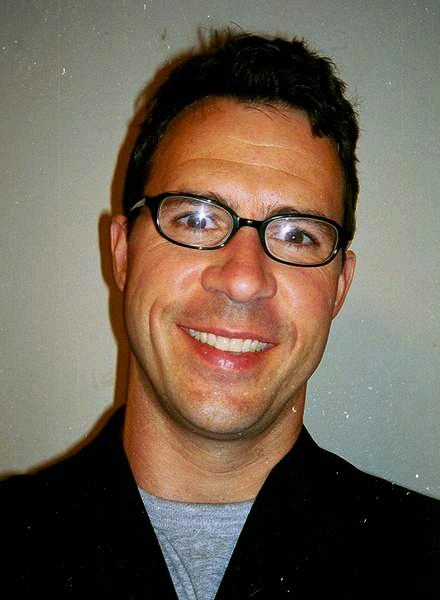

I take several medications for multiple health conditions and the prices keep going up, even with my Medicare prescription drug insurance. Can you recommend any tips that can help cut my costs?
Tapped Out Tina
The high cost of prescription drugs is an ongoing problem that stings everyone, but it usually affects seniors more because they have a greater need for medications and because Medicare doesn’t cover all their drug costs.
While the Inflation Reduction Act, that was signed into law last year, will help seniors save on their medications by negotiating lower drug prices and capping out-of-pocket spending at $2,000, it will be a few years before the law is fully enacted. In the meantime, here are some different strategies that can help reduce your costs so you can afford what you need.
• Talk to your doctor: A good first step is to review your medications once a year with your doctor to find out if any of them can be stopped or reduced. If you’re taking any brandname drugs check to see if they are available in a cheaper generic form. Also, for any drugs you’re taking long-term ask your doctor for a cheaper three or six-month prescription, versus a one month. And find out if any of the pills you’re taking can be cut in half. Pill splitting allows you to get two months’ worth of medicine for the price of one. If you do this, you’ll need to get a prescription for twice the dosage you need.
• Review your insurance: Carefully review your drug coverage during the open enrollment period, which runs Oct. 15 – Dec. 7 for Medicare beneficiaries. Make sure all your regular medications are covered in the plan’s formulary; that your current pharmacy is in the plan’s network; and that your plan covers additional medication coverage in the gap. To shop and compare Medicare prescription drug plans go to Medicare. gov/plan-compare.
• Pay cash: Not using insurance for prescriptions seems counterintuitive, but in some cases, it may save you money. For example, many chain pharmacies and big-box stores like Walmart and Costco have their own prescription savings programs that may be lower than your insurance copayment. Or you can use coupons through GoodRx.com or RxSaver. com that can save you up to 80% off
the list price of generic and some brand-name drugs in certain pharmacies.
• Shop online: You can also save on regularly used medications by having them sent to you from a mail-order pharmacy. Check with your health insurer or regular pharmacy to see whether it will get you a better deal. If not, check online pharmacies like CostPlusDrugs.com or HoneybeeHealth.com. With these, you may spend less in some cases than you might with insurance.
• Buy from Canada: Because prescription drugs are often much cheaper north of the border, many Americans have chosen this option for years. While this is technically illegal in most states, the Food and Drug Administration generally does not stop people from doing it. If you want to explore this option use PharmacyChecker.com, an online tool that will help you identify reputable Canadian and international online pharmacies.
• Get more help: If your income is limited, you may also be able to get help through Medicare’s Extra Help program (Medicare.gov/basics/ costs/help/drug-costs), your state pharmaceutical assistance program (Medicare.gov/plan-compare/#/ pharmaceutical-assistance-program/ states) or patient assistance programs (Medicare.gov/pharmaceutical-assistance-program). Visit each website to see if you’re eligible and to apply.
Director at Tri Valley YMCA talks about the most popular programs at the Y, how the organization is getting members back after COVID-19 and plans to build a brand-new $21 million facility in Rome
 David L. Podos
David L. Podos
Q: How long have you been the branch manager?
A: I have been branch manager for 17 1/2 years.
Q: What is the history of your facility?
A: Sure, I would like your readers to know a little bit more about us, I think they will find it quite interesting. First off, we are the YMCA of the Greater Tri-Valley, so we have a branch in Oneida and our headquarters are right here in Rome. We have been in the Rome community for 152 years and are one of the oldest YMCAs in the country. Actually, Springfield, Massachusetts, has the oldest YMCA. Also, there used to be a YMCA in Utica, however they had some financial challenges, so we took it over for a couple of years, but unfortunately, they lost their charter because they couldn’t handle the financial burden that they were under.
Q: That’s very interesting; 152 years of service in Rome. How about the services and programs that you
provide to the community, do you offer those to all age groups?
A: Yes, we actually have programs that cover a wide range of ages. For example, from the newborn, to one member we had that was 103 years old. So, we really do cover the whole age gamut.
Q: What are some of the programs that you offer?
A: We have kids in our child watch program that are newborn, (6-8 weeks old) where the parents come and drop them off, then they go work out while we watch over their child. We have kids who are 6 months to a 1-year-old taking swim lessons with mommy-and-me classes. We also have a large senior population, (at both our Rome and Oneida branches), which is great because they do everything from Silver Sneakers classes, to water aerobics. The water aerobics is extremely popular because it’s better for your joints and muscles, so we have a lot more people trending into the pool.
Q: Do you have a therapy pool here at your facility?
A: At one time we did. Over 30 years ago the state put in a therapy pool for us. That pool cost over a hundred grand to operate and when the pandemic hit, we drained both our pools because we knew we would be down for five to six months. When it came time to reopen, we realized we really did not have the money to keep both pools open. The state stopped funding it, so we chose to close the therapy pool and keep our main pool open.
Q: COVID-19 hit many businesses in so many ways but certainly finan cially. How bad was it here?
A: It was a very big thing for us. Initially we lost 50% of our member ship. Before the pandemic we had about 9,000 members between Rome and Oneida locations. Now we have 3,600 members [in Rome] and 2,555 members [in Oneida]. The good news is — we are making progress work ing our way back to pre-pandemic numbers.
Q: You mentioned a number of programs that you offer your mem bers, but tell me, what is your No. 1 program?
A: By far, our hottest program is our aquatic classes. While many se niors love these classes, it is starting to trend to a younger crowd as well, members who are in their 30s and 40s. The classes are a great workout and your joints and muscles don’t get strained because being in water there is less resistance upon the body, [but] you’re still getting a great work out. So, in our water classes we offer many options such as aqua yoga, aqua Zumba, hydro spin bikes which are made to be placed in the pool and people really love that.
Q: You mentioned something about silver sneakers. What is that all about?
A: Silver Sneakers is actually an insurance base program for 55 and older, so, many insurance plans will pay for membership to a facility such as ours. Anyone who has health insurance can call customer service and find out if they are covered, it’s a great benefit.

Q: What are the funding sources you receive to operate this great facility?
A: Our main source by far is our membership, which accounts for approximately 60%-65% of all our funding. Our school-age program brings in about 15%. We also have a number of grants that support us as well.
Q: How many staff do you employ?
A: Around 175 staff.
Q: Is there anything else you would like to share?
A: Actually, yes. We are looking to build a brand-new building here in Rome, a $21 million facility. We are at the process of getting very close to that and the goal would be to break ground at the end of this year and or the spring of 2024. We anticipate to be open at the end of 2024 or early 2025. The building will be a 44,000 square foot facility.
For more information about the Tri- Valley YMCA call 315-336-3500. For more information on services, programs, upcoming events: www. ymcatrivalley.org
Enjoy reading In Good Health newspaper? The paper is free to you but very expensive to produce and distribute. Keep the publication going. Consider supporting it. If you are a reader, please become a paid subscriber. If you’re a nonprofit, a medical practice or organization, consider advertising. You will get a great deal of exposure since the paper is everywhere for the entire month. We will even design your ad at no charge.
For more information, send an email to editor@MVhealthnews.com
— Type “Support” on the subject line.
Excellus BlueCross BlueShield

recently awarded Clear Path for Veterans Inc. a $5,000 Health and Wellness Award to support the National Alliance on Mental Illness (NAMI) Homefront: Mental Health Resources for Military Service Members, Veterans, and their Families program.
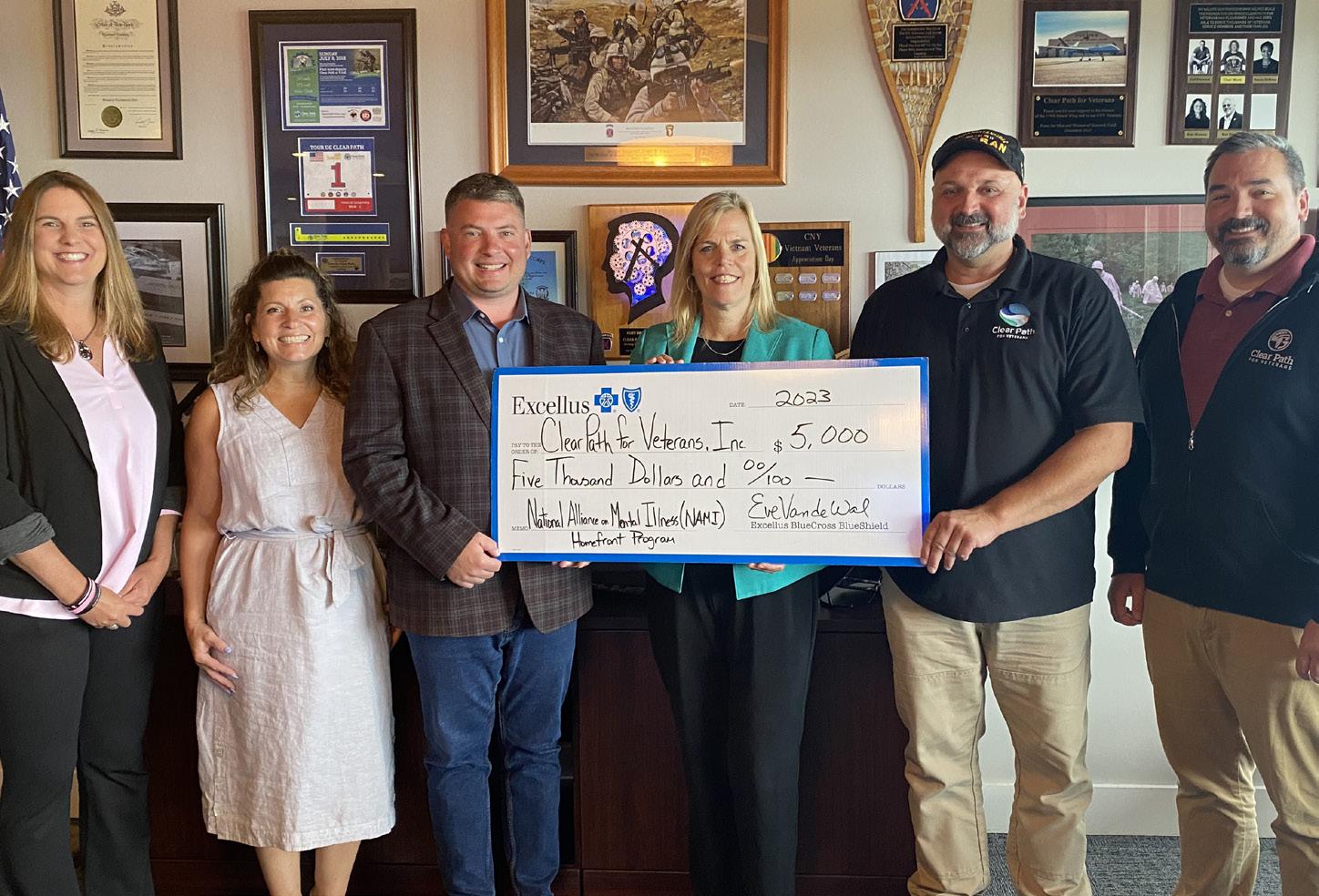
This six-session educational program is designed to assist families, caregivers and friends of military service members and veterans impacted by mental health conditions. Trained family members of service members and veterans lead the sessions helping participants learn to manage stress, support their family member, access services, and stay informed on the latest developments in mental health including treatments and therapies. The program assists those experiencing posttraumatic stress disorder, traumatic brain injury, anxiety, depression, and substance use disorder. Participants receive train-
ing to help navigate the challenges of mental health conditions, manage crisis, solve problems, and communicate effectively.
“Recovery is a journey and there is hope for all people affected by mental health conditions, including veterans and military service members,” shares Alex Behm, Clear Path New York executive director. “NAMI Homefront provides the opportunity for mutual support and shared positive impact. Program participants experience compassion and reinforcement from people who relate to their experiences. And through their participation, they have the opportunity to help others grow.”
Clear Path for Veterans’ mission is to enrich the lives of veterans while addressing the wellness and social issues they face through community, programming, and direct services. Veterans are provided the opportunity to connect, restore and grow.
The Edwin J. Wadas Foundation has extended the application deadline for the $250,000.00 Game Changer Grant to Oct. 16.
The Game Changer Grant is a competitive grant to address obstacles preventing youth from accessing recreational and competitive youth sports.
Qualified applicants include school districts, nonprofit organiza-
tions and municipalities located in Oneida and Herkimer counties.
All projects should be transformative, sustainable and address an issue preventing children ages 5-18 from accessing sports, athletics, or recreational play in their local community.
“The Game Changer Grant provides significant funding to transform your community and provide
children access to sports and fitness,” said Victoria Cataldo, executive director of the Edwin J. Wadas Foundation. “There are numerous physical, mental and social skills that can be taught through participation in youth sports. We encourage organizations to collaborate and be creative when addressing obstacles facing their community.”
The wi–nner will be chosen on
Nov. 16.
For more details and to apply visit gamechangergrant.com.
The mission of The Edwin J. Wadas Foundation, Inc. is to enhance the experiences of recreational and athletic programs for youth ages 5-18 in Oneida and Herkimer counties by providing financial resources to qualified organizations and educational scholarships to participants.

Living with another person is probably one of the most difficult things to do.
Moving in with someone has advantages. It’s a way to ramping up the commitment and lower living costs. You get to enjoy more time in each other’s company, while simultaneously quadrupling your ability to compromise.
The key words are those last few words: Quadrupling your ability to compromise! Trust me, this is true.
A few months ago, I moved in with a man. We had spent a lot of time together; he was always pleasant and agreeable. I thought all would go smoothly.
I thought I knew how to live with someone. But I hit new challenges I never saw coming. There’s a lot I’m learning.
I love the way Sue Grafton’s character, Kinsey Millhone, describes it: “Being single can be confusing. On one hand, you yearn for the simple comfort of companionship. On the other hand, once you get used to being alone, you have to wonder why you’d ever take on the aggravation of a relationship. Other human beings have all these habits, opinions, peculiar tastes, not to mention mood disorders and attitudes that in no way coincide with the correct ones, namely yours.”

I keep reminding myself that I did want his full-time companionship. And that I choose this. It works well for me financially. And just because he does so many things in ways that are vastly different from the ways I’ve always done things (the right way of course), I need to be OK with that.
He’s used to living alone. So if he continues to act like a person who’s still living alone, that’s who he is. That’s who I chose.
We’re so different. For example, shopping together is a disaster: He has two speeds: slow and reverse. I’m fast at everything. I speed
through the supermarket, quickly making choices, throwing my choice in the cart then speeding on to the next thing on my list. He leisurely strolls down each aisle, studying each item thoughtfully before deciding what to place gently in the cart. You can see why this doesn’t work.
Kind of like how we drive. If the light’s been green awhile, I speed up to get through before it changes. He slows down, preparing to stop.
And when I’ve cooked dinner and he only has complaints about what he doesn’t like, well, I chose to cook that dinner, and I should be happy he feels comfortable letting me know what he doesn’t like.
After three months of things getting worse and worse, we hit bottom. We were both miserable and acknowledged this, discussing whether we should keep living together. We agreed to split up if things didn’t change and talked about how that would work.
Since that discussion and considering alternatives, things started moving in a positive direction. We’ve both mellowed out, smoothed out the rough edges. He’s quit complaining and whining all the time and I’m finally enjoying our life together. It’s working the way I thought it would work from the beginning.
I really did want our arrangement to work out, so I began to recognize some things we needed to do differently and do them.
So, whether you’re living with a partner, a friend, family member or stranger, here are some suggestions you might consider:
• Be ready to compromise. Yes, it’s rough at first, working out how things will work between you. If you can’t compromise, live alone. Every little detail comes up for discussion.
• Don’t expect each other to be enough. On a logical level, most of us understand that one person can’t meet all our needs. So why do we expect this from our romantic part-
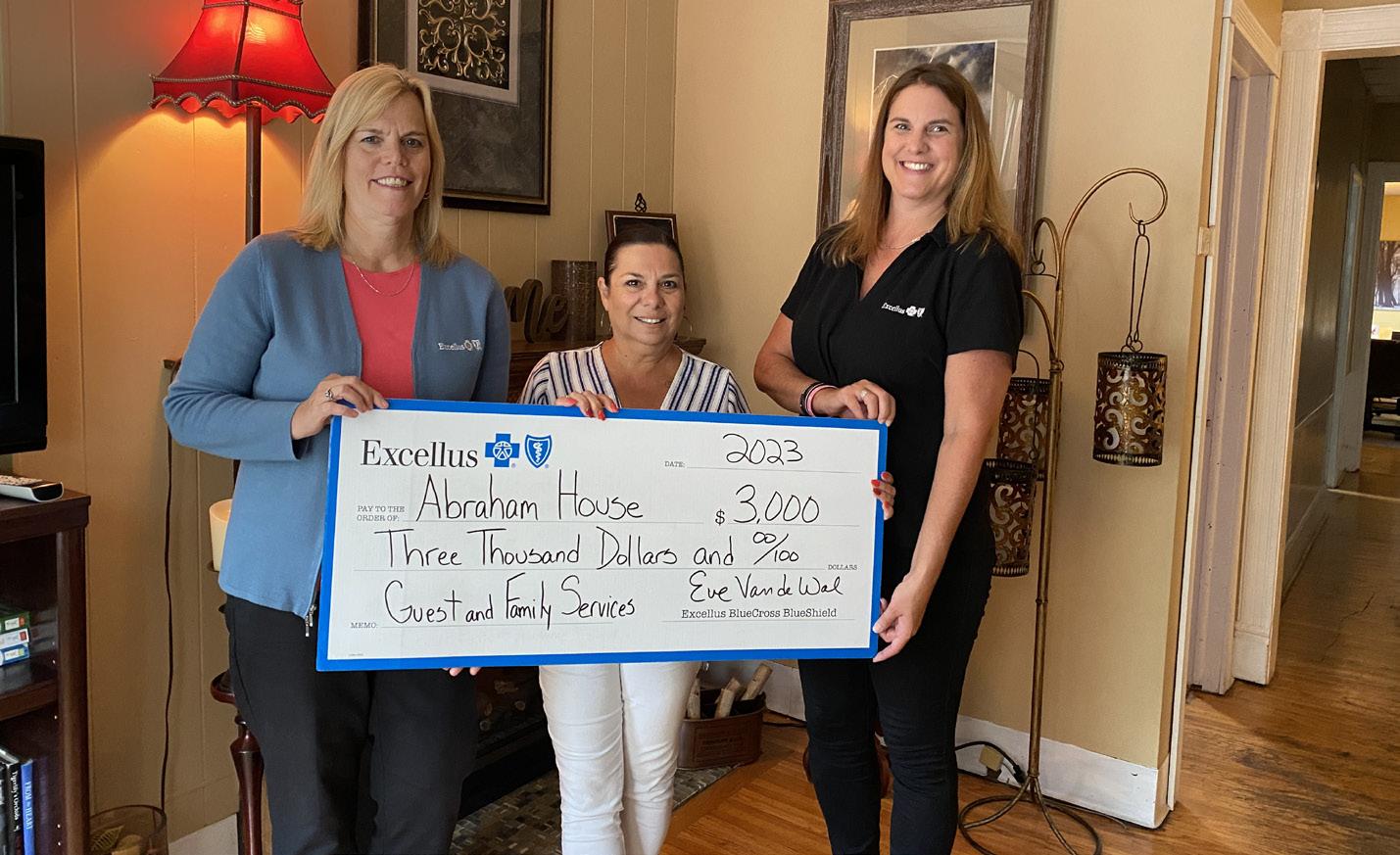
Excellus BlueCross BlueShield recently awarded Abraham House a $3,000 Health and Wellness Award to support its guest and family services. This program was created to maintain consistency in guest and family care, ensuring that high standards of quality and excellence are maintained daily. The guest-centered care model promotes interpersonal communication and daily documentation that strengthens relationships with Abraham House guests and families.
“We want our guests to be comfortable, supported and loved,” said Kim Todd, Abraham House assistant director. “This program provides our families with much needed emotional support during a very difficult and vulnerable time in their lives.
Navigating death is never easy. With this program, we can meet our guests wherever they are in their journey.” Guest and family services will be supported by a robust volunteer program designed to take some of the burden off caregivers. Volunteers can assist with phones, answering the door, cooking meals, cleaning, greeting guests’ families, or reading, talking, and playing cards with Abraham House guests. To learn more, visitwww.theabrahamhouse.org.
Abraham House provides terminally ill guests and their families a safe and loving home, with all the support needed for dignified end of life care, free of any financial burden. Caregivers provide compassion, comfort and round the clock care in a safe home environment.
ner? We’re expecting one person to give us what an entire village used to provide.
I realized one of our issues was that our world was too narrow. We’re socially isolated, living in a new area, don’t know anyone. None of our friends live close. We were depending on each other to be everything and that was not realistic. We drove to spend time with our old friends and came out feeling happier. We’re cultivating new people in our new life.
• Do some things together, some things apart: Doing everything together all day, every day, likely isn’t super great for either of you. Each of you needs your own interests and your own things. Spending time apart makes your time together more meaningful. A relationship needs some space to thrive. We’re finding opportunities to do things alone and as a couple.
Writer and poet Khalil Gibran
describes this balance in “The Prophet,” written 100 years ago: “Let there be spaces in your togetherness. Let the winds of the heavens dance between you…Fill each other’s cup but drink not from one cup. Give one another of your bread but eat not from the same loaf. Sing and dance together and be joyous, but let each one of you be alone.”
You’re a woman. You worry. It’s what we do.
Whether it’s about the way we look, our job, our partner, our kids, our bills —there’s always a long list of things we have to worry about.
“Women must take care of everything. We take on everything,” said certified nurse coach Christina Henry, owner, Vessel: Bodhi, Mind, and Soul, Boonville. “We worry about our finances, children, partners, friendships, parents.”

“We want to fix everyone’s problems. We take on everyone’s problems,” she added.
It’s hard to pin down why women worry so much more than men. Some suggest that worry is an evolutionary trait. The strong female bond and concern about their children may help to protect infants and young children, allowing the species to thrive.


Other studies suggest that there may be a hormonal link to worry. Estrogen suddenly floods receptors in the brain around puberty, causing a surge of worry and anxiety.
Worry does appear to be wired into us as women. And we’re encouraged to be caretakers and nurturers. From a young age, we’ve been taught to put others’ needs before our own.
What impact does this have on our lives? When your body puts out stress hormones, this increases your risk of health conditions, including heart disease, anxiety disorders and depression.
Worrying can keep you awake at night, sap your emotional strength, make it difficult to concentrate, cause headaches, stomach problems maybe even make you irritable.
Minimizing the chronic worries and stresses of daily life as much as
possible will support your overall health. Some things to consider to help limit your worries:
• Get active: Getting active, moving your body, will reduce stress and significantly improve depression. If you’re currently inactive, start with gentle activities such as walking or biking. Choose an activity that you enjoy to increase your chances of sticking to it.
• Eat healthy; don’t skip meals: When you don’t eat, your blood sugar may drop. That can trigger anxiety. Eating healthy gives you energy and improves your resilience to stress. Food can affect your mood; people who follow a diet high in processed foods and sugar are more likely to experience higher stress levels.
• Caffeine can trigger anxiety and stress levels; experiment whether it affects you.
• Steer clear of alcohol: A drink may take the edge off at first, since it’s a natural sedative. But, as it’s a depressant, it slows down processes in your brain and makes anxiety worse.
• Take time to care for yourself: This means identifying and meeting your needs, something that most women struggle with. Take care of yourself so that you stay physically, mentally and emotionally well. This increases your resilience, making you better equipped to deal with stress.
“Begin by noticing what you need,” suggested life coach April Cacciatori, own-

er of Zensations Therapeutic Massage in Rome. “It sounds simple, but the results are profound. Awareness will help you create a new habit or shift perspective.”
• Do something you enjoy every day, something that brings you joy. Like reading a few pages of a book, gardening, going for a run, taking a bath, lighting candles, doing a craft project, cleaning out your closet. If it makes you feel good, it qualifies. The key word here is “enjoy,” which means you need to pause and immerse yourself in the experience or activity.
• Learn to say “no:” Putting too much on your plate may increase your stress load and limit the amount of time you can spend on self-care. Be selective about what you take on, and say “no” to things that will unnecessarily add to your load.
• Spend time in nature: We stand to benefit tremendously from a strong connection with nature. “The demands of everyday life often overtax our brain and body,” said Amanda Shanahan, manager of employee wellbeing at Excellus BlueCross. “Time with nature is time to recharge, allowing us to better cope with life’s stresses. Our brains don’t have to work the same way to pay attention to nature, which allows time for restoration.”
• Face the thing you’re most afraid of: Ask yourself
“what’s the worst that can happen?”
Then ask yourself: “If that happened, could I deal with it?”
“How did I deal with similar things that happened?” “What support do I have available?”
Consider how you might prevent that worse thing from happening and then do what you need to do to prevent it from happening. If there’s nothing you can do, just let it go.
If you have chronic feelings of worry, fear, or dread that interfere with your day-to-day life, consider seeking professional help.
Henry will be presenting a threeday retreat beginning Oct. 5. “It will be an atmosphere where women can feel safe, grounded, respected, but also have fun, getting creative eating good food and share circles,” she said.
See www.facebook.com/coachchristina0142 for details.
